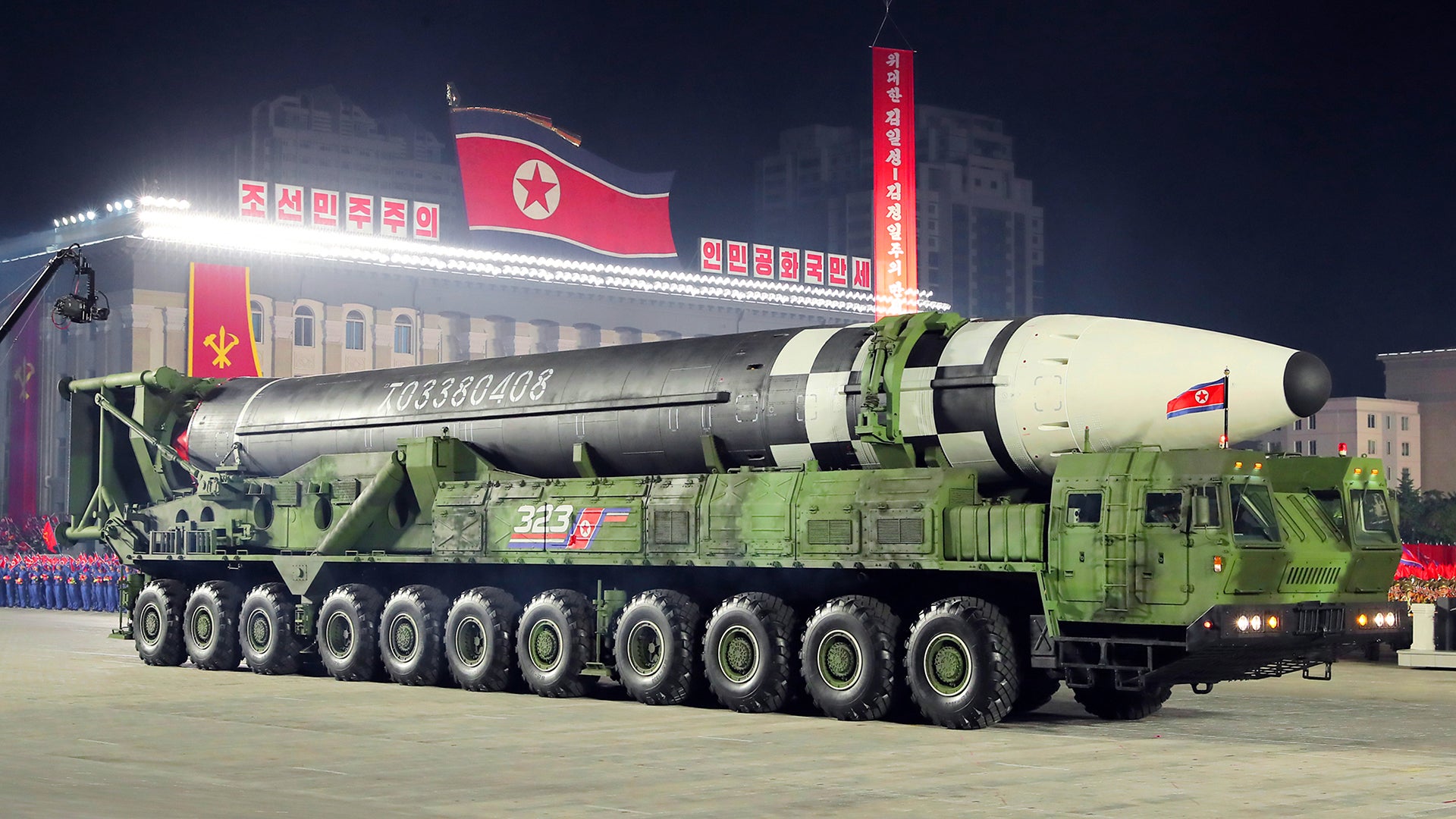On Saturday, October 10th, 2020, North Korea put on its first publicized military parade in years. Taking place at night in and over a revamped Kim Il Sung Square and celebrating the 75th anniversary of the country’s ruling Workers’ Party of Korea, the spectacle was unlike any we have seen before. It represented an almost laughable, but terrifying juxtaposition of perceptions. For a country that is supposedly reeling from years of sanctions, with its dire economic situation only made worse by the COVID-19 pandemic, what was displayed was entirely the opposite. A dizzying array of new advanced weaponry was unveiled to the world, more than we have ever seen before. Even the perception of North Korea as a dark country as a result of never-ending energy deficits was slashed with bright and colorful lights, including warplanes zooming overhead decorated with neon-colors. All this has come after years of Kim feinting a new era of diplomacy to his gullible adversaries who have become drunk on wishful thinking.
It cannot be underestimated what we just saw. Many will say that it is all for show— some of it is—but the realities of recent history run quite counter to the assumption that the weapons shown are hollow effigies of the real McCoy. In fact, such a view has become laughably dated and downright inaccurate. When it comes to weapons development, under the Kim Jung Un regime, the proof has very much been in the pudding. The level of candor regarding his military technology ambitions has been striking in its honesty and accuracy. Those who chronically underestimated North Korea are living in the past.
The Hermit Kingdom has proven to be amazingly resourceful under Kim Jong Un and has delivered capabilities many hung their careers on claiming could only be obtained far in the future. This is something The War Zone
warned about years ago, and we were proven to be all too correct, unfortunately.
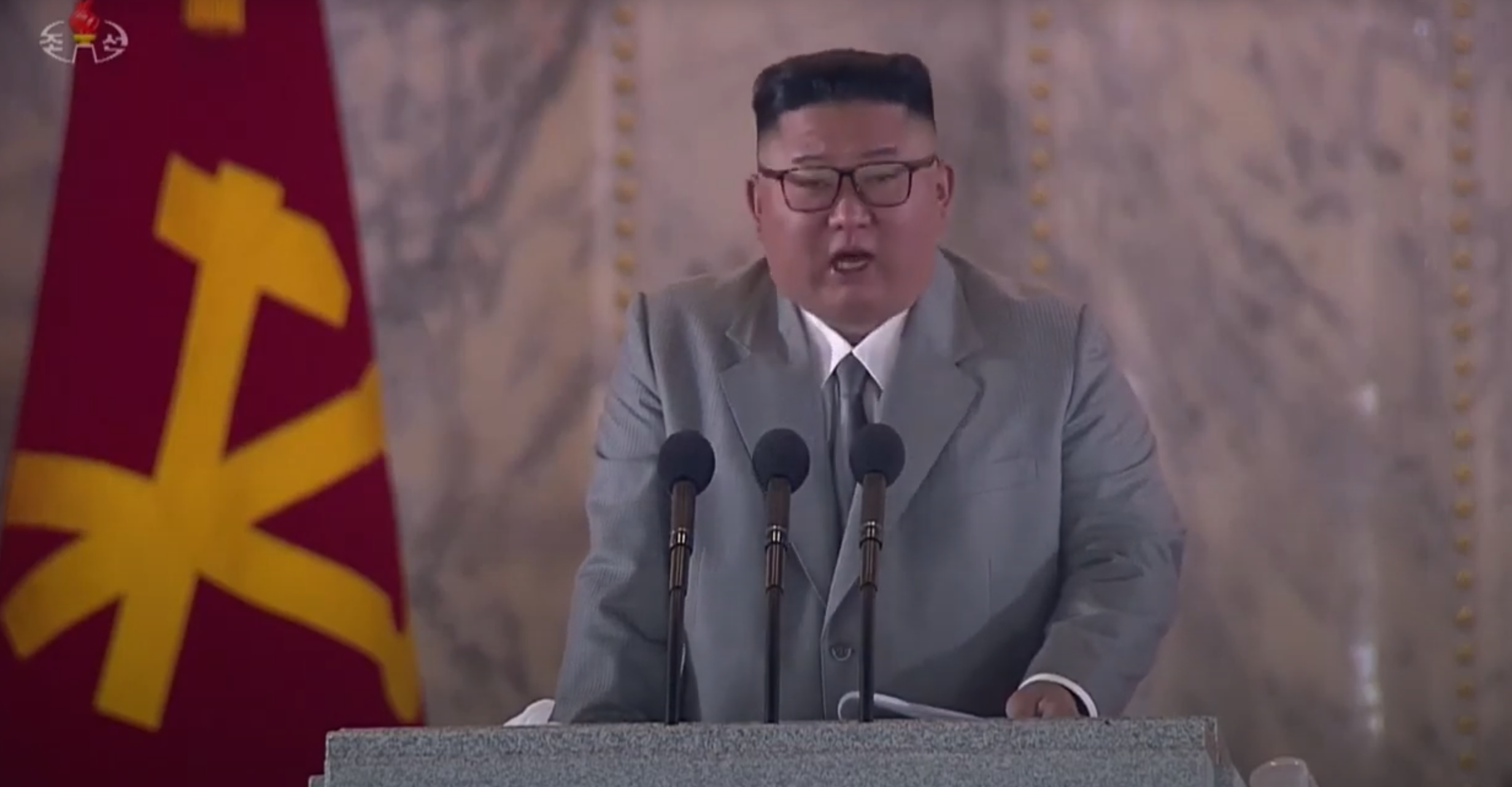
Let’s get to what was shown. We need to start with the two big strategic developments. A handful of absolutely massive new intercontinental ballistic missiles were rolled through Kim Il Sung Square. This would be the third iteration of the ICBM concept for the North Koreans, having already unveiled and tested the Hwasong HS-14 and HS-15 in 2017. This new missile looks to be a significant outgrowth of the already monstrous HS-15, which is suspected of being able to reach pretty much anywhere in the United States, although its terminal delivery capabilities remain a puzzle, as is the case for the HS-14 and other longer-range ballistic missiles in Pyongyang’s arsenal that are capable of delivering a nuclear warhead.
It isn’t clear if this is just a longer-ranged, more advanced evolution of the prior design, or if this is intended to deliver a heavier payload, as well, namely multiple independently targetable reentry vehicles (MIRVs).
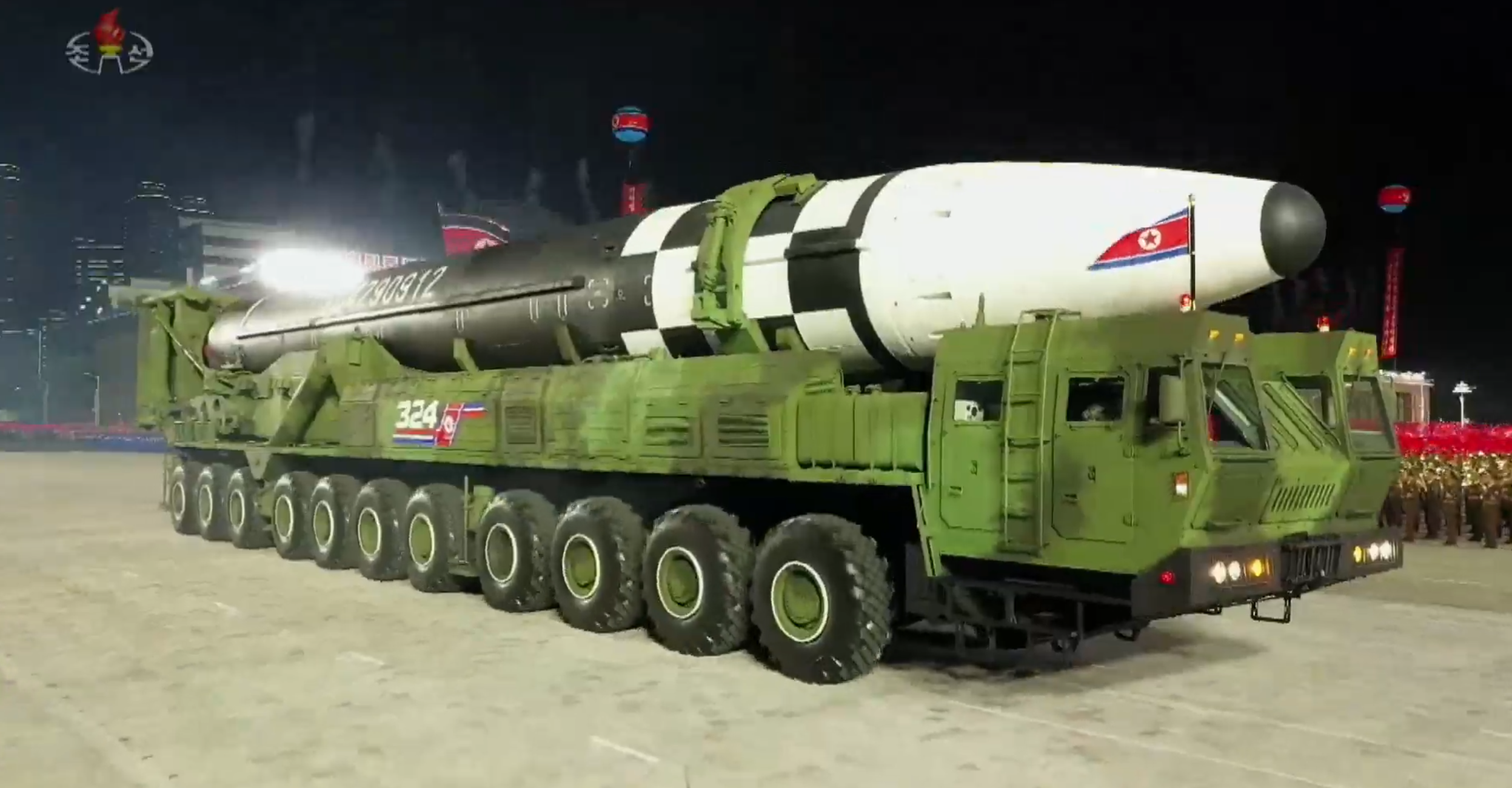
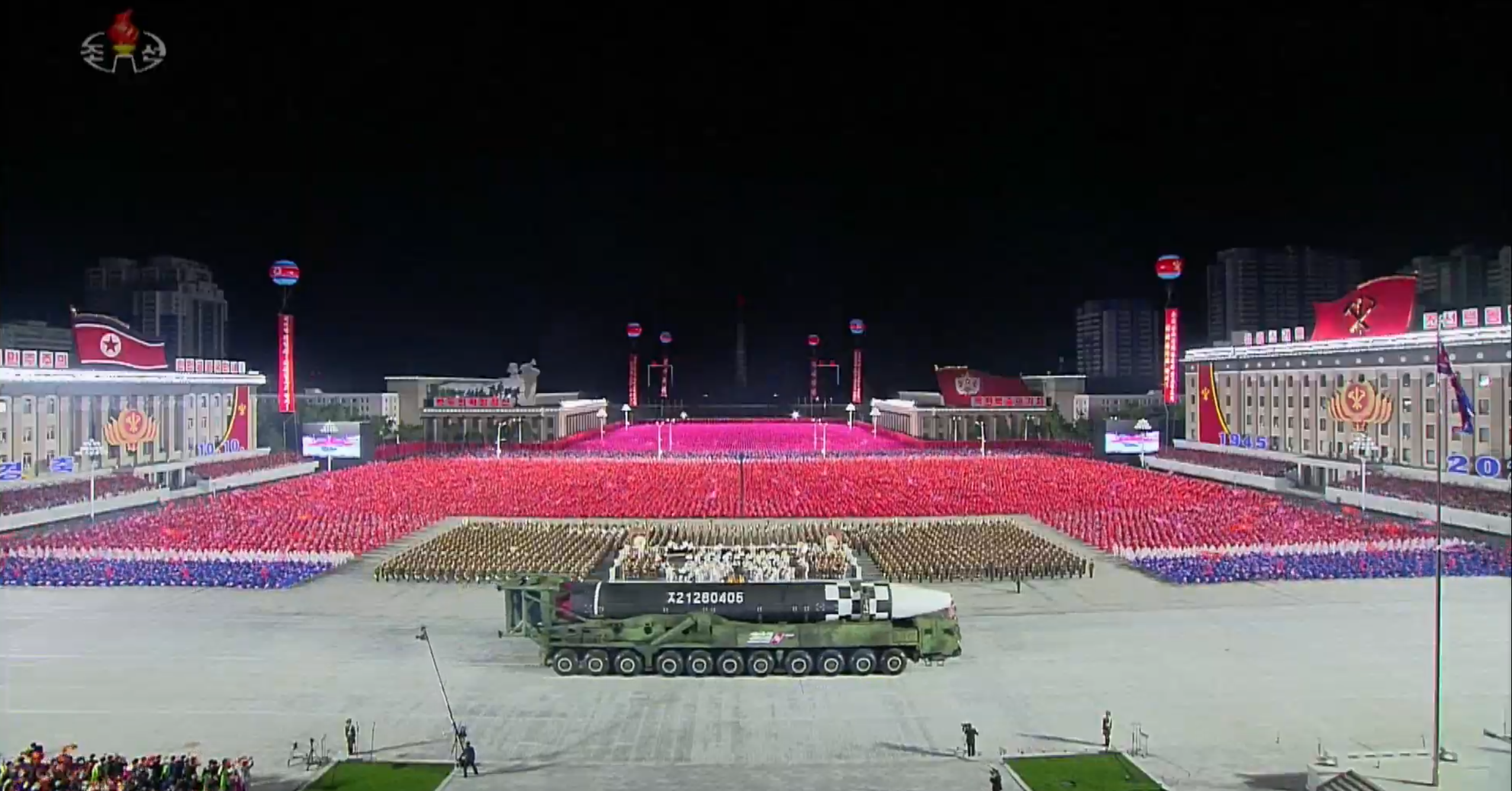
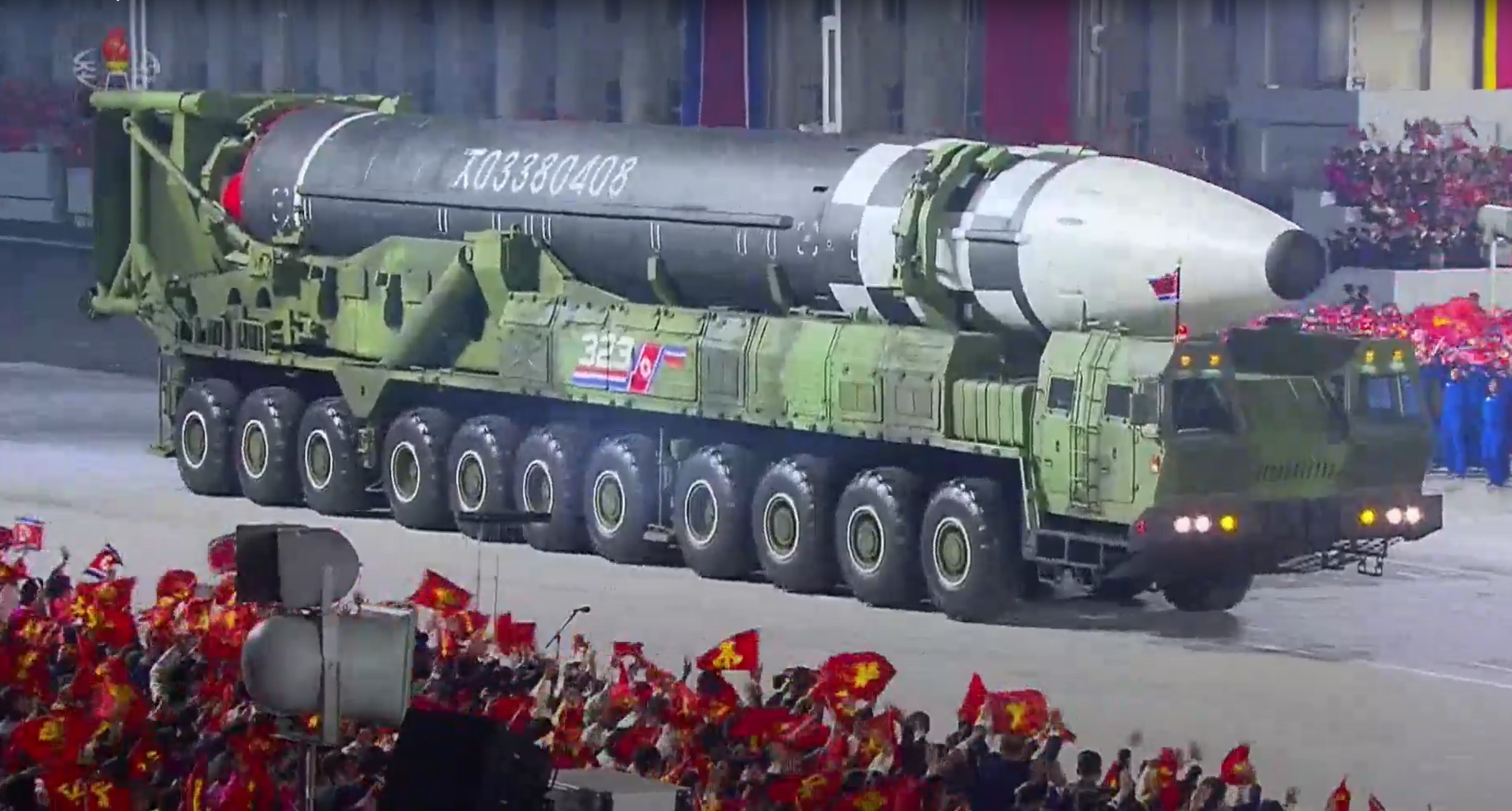
Beyond this new weapon’s capabilities, the biggest question is where did North Korea get the transporter-erector-launcher (TEL) to haul around such a giant ICBM. The previous TEL for the HS-15 had nine axles, this one has 11. The previous TEL is thought to have been acquired from China and modified. It isn’t clear if these have a similar chain of custody or if North Korea is actually manufacturing its own massive TELs now, which almost seems likely at this point if this is missile it wants to produce going forward.
There is the question of just how mobile an 11 axle TEL carrying this wide of a missile really is. These would likely be used to roll out of hardened and hidden shelters to predetermined firing points that don’t have obstacles that could block their path. In other words, they wouldn’t just roam freely. Although we need a bit more time to research it to claim this unequivocally, we do believe this is one of, if not the largest road-mobile liquid-fueled missiles on earth. All of the other Hwasong series missiles have been liquid-fueled, but it is possible that this is a hybrid missile, with a top stage being solid fuel, as well. North Korea has made considerable advances in solid fuel rocket propulsion in recent years.
The strategic implications of this weapon are large for a number of reasons. Its existence points to a need for flight testing, which could see those types of provocative activities return to our reality. More than that, they underscore just how hard North Korea has continued to work on its strategic programs long after a new era in diplomacy was declared. Nearly three years is a long time. This is a manifestation of what they have been up to while the love affair between Trump and Kim has been ongoing even though the regime has never shown one iota of intention of giving up its nuclear stockpile or the delivery systems that underpin it.
Arguably just as impactful as the new ICBM is the reveal of the Pukguksong-4 submarine-launched ballistic missile (SLBM). The inclusion of these weapons is another indication that North Korea has shifted considerable resources to developing some type of submarine-borne second-strike deterrent. We have seen the reworked Soviet-era sub they are adapting for this role, at least as an interim solution, and the country has tested a new submarine-launched ballistic missile during this period of diplomatic detente.
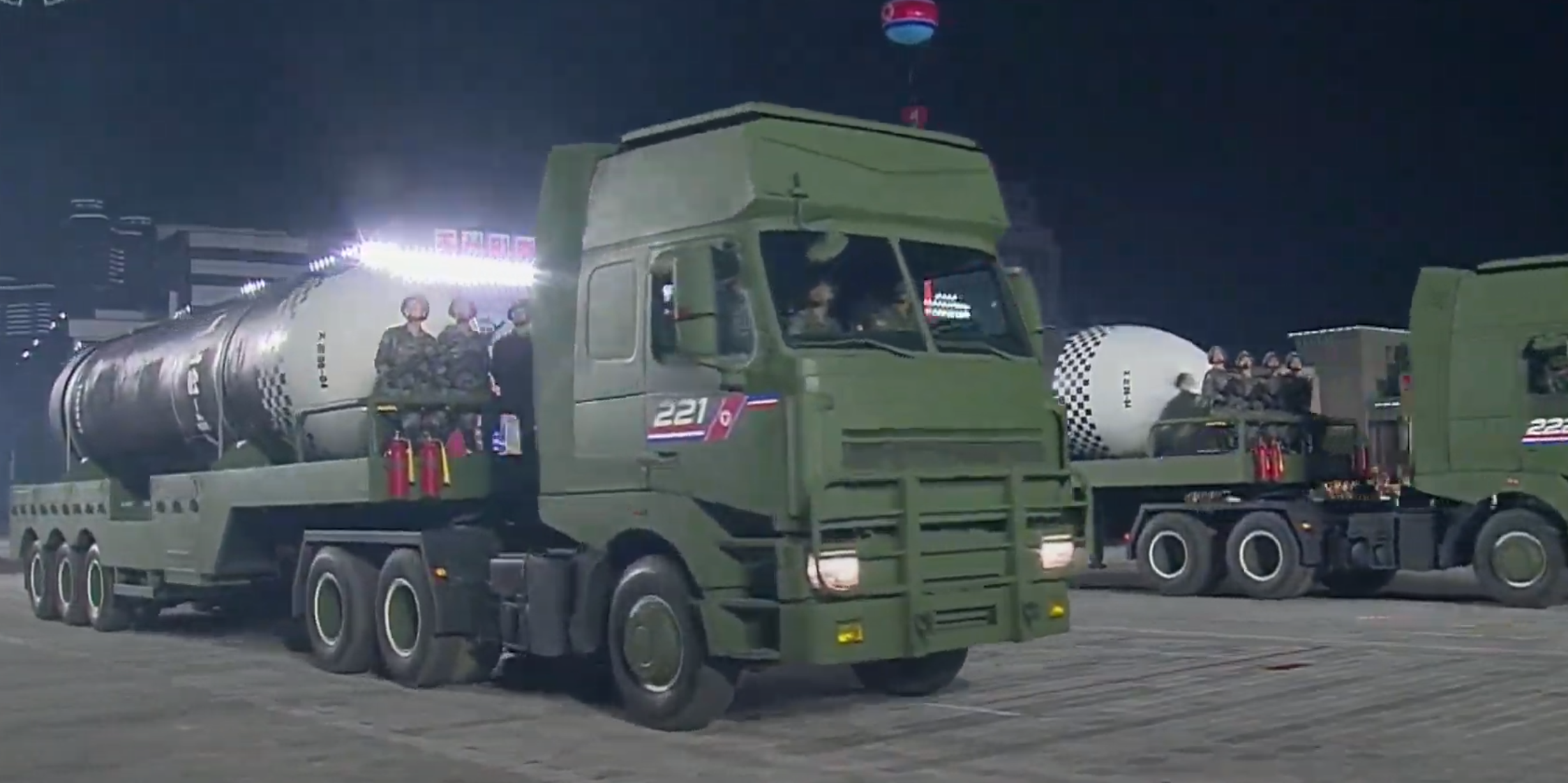
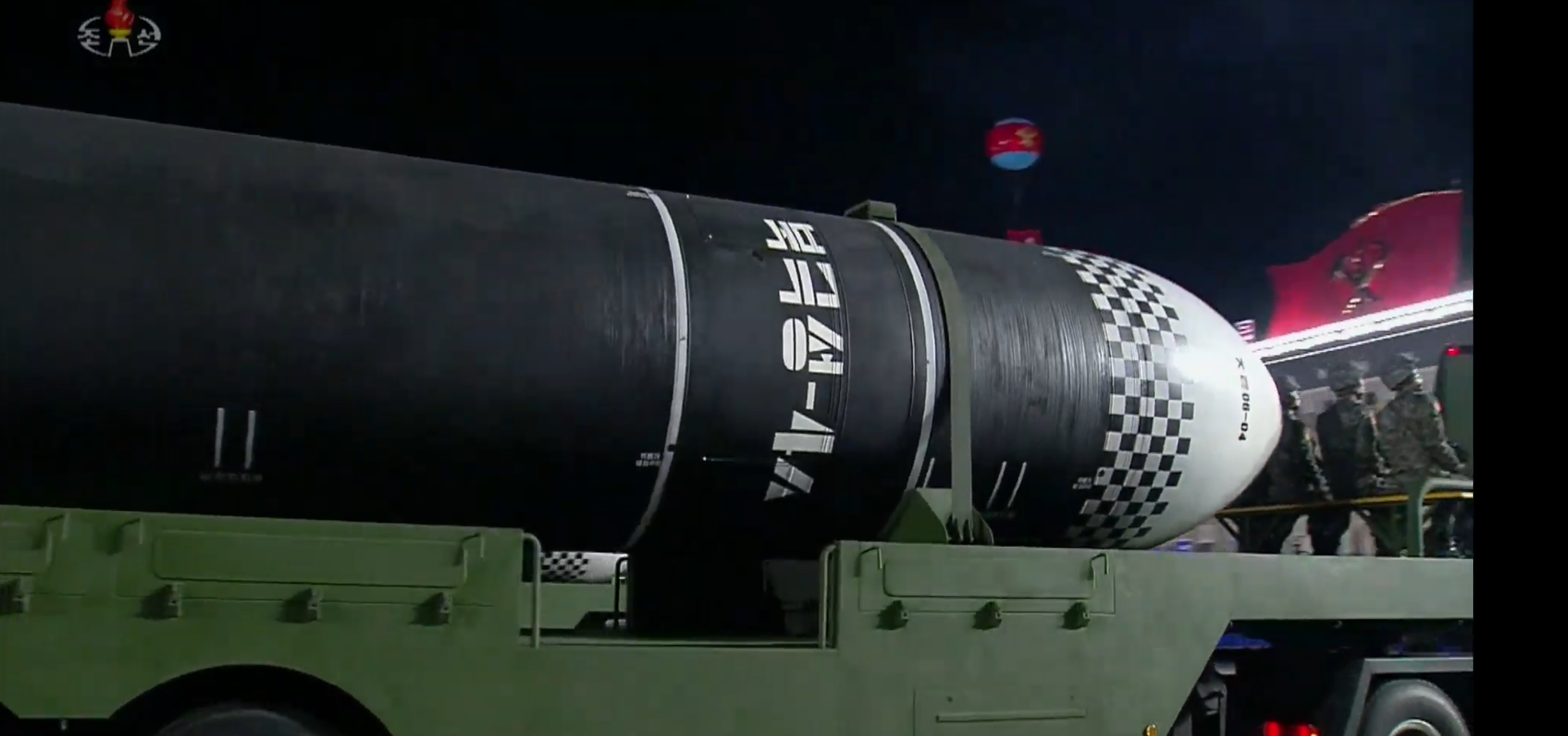
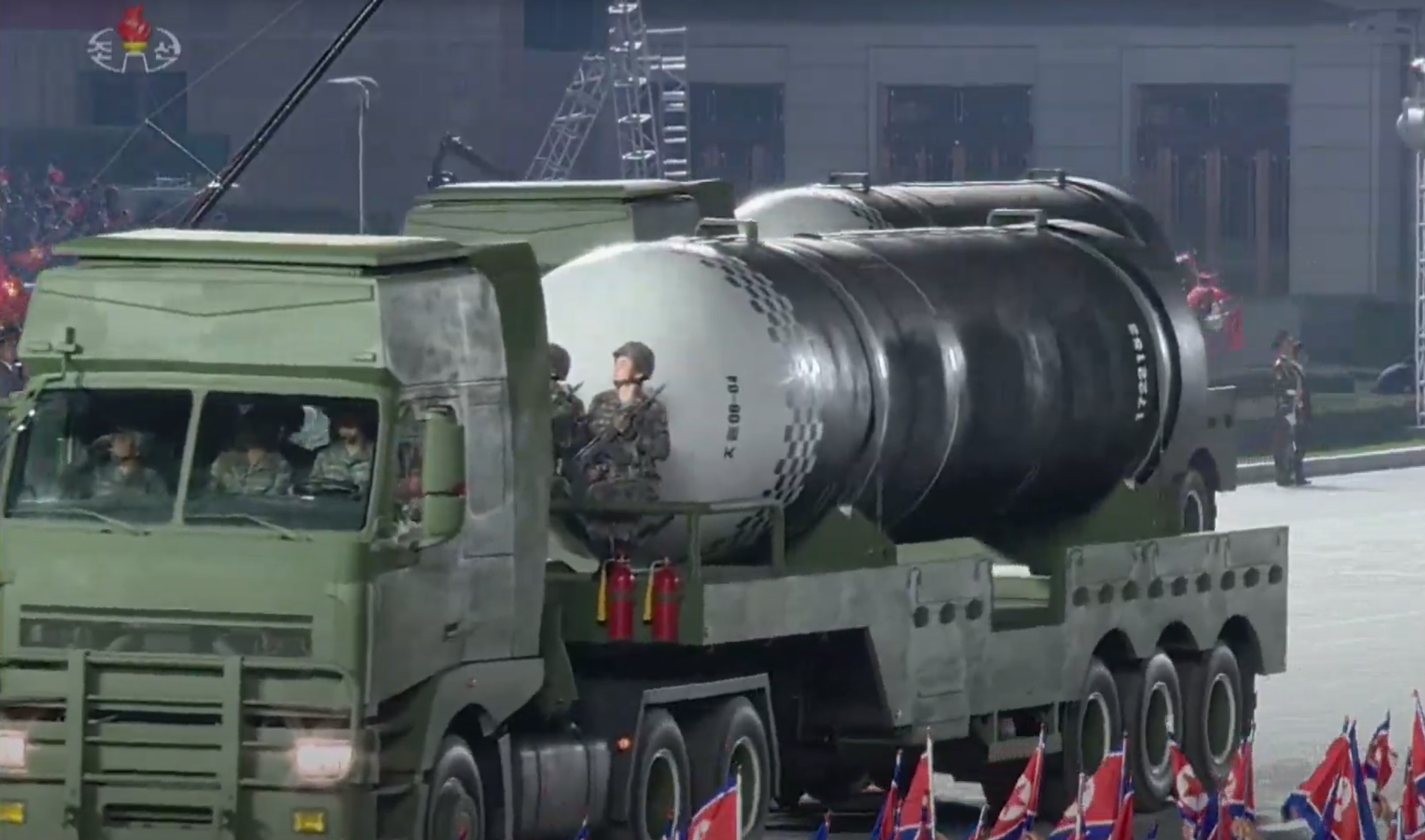
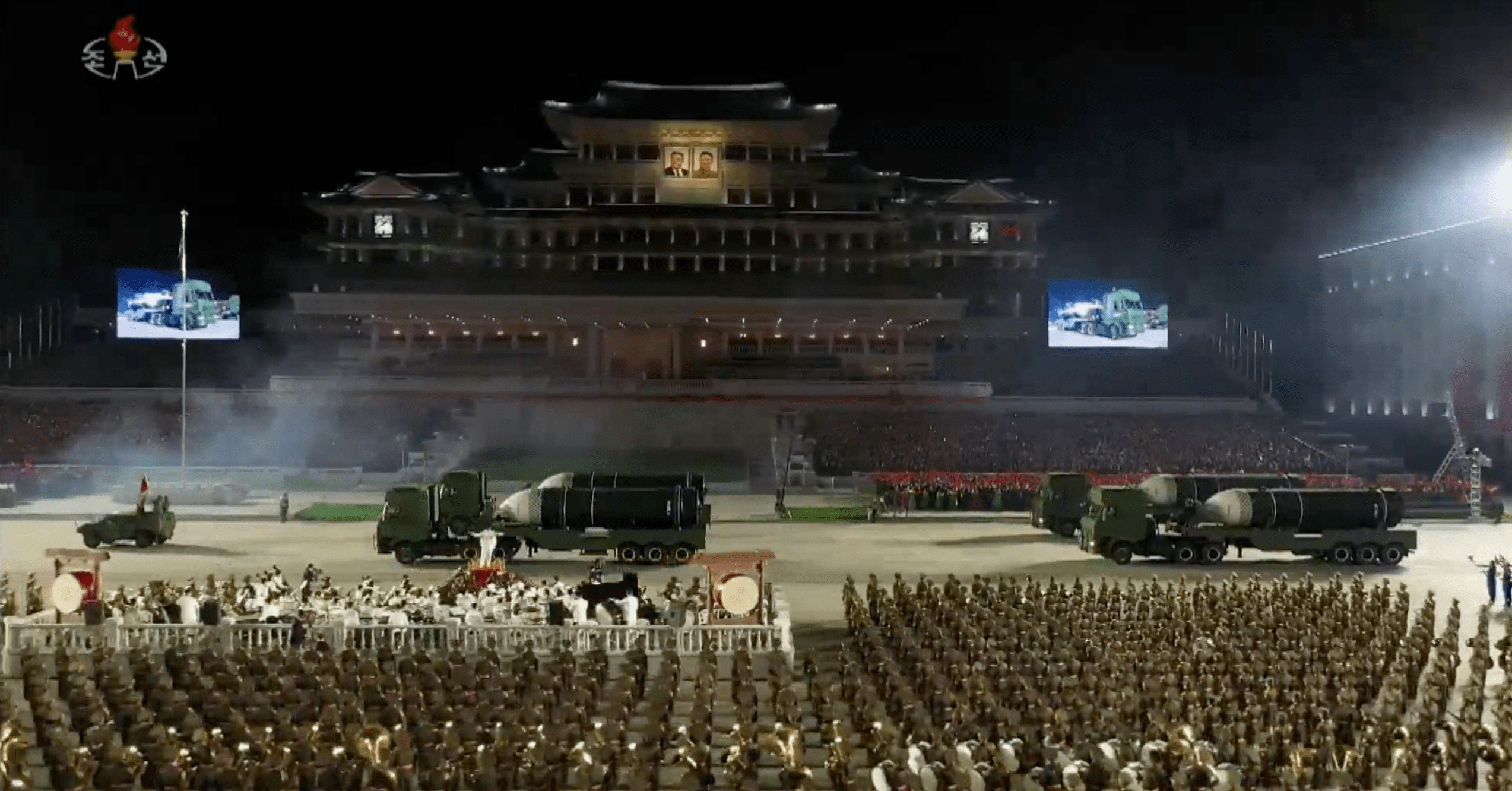
It’s also worth noting that the solid fuel Pukguksong-2 SLBM was supposedly adapted to create the KN-15 road-mobile short to medium-range ballistic missile. There is no reason to think they won’t adapt this more advanced variant to a ground-launched form, also. Solid fuel ballistic missiles are far harder to counter prior to launch as they take no time to fuel before being fired. The KN-15 was also on display during the parade.
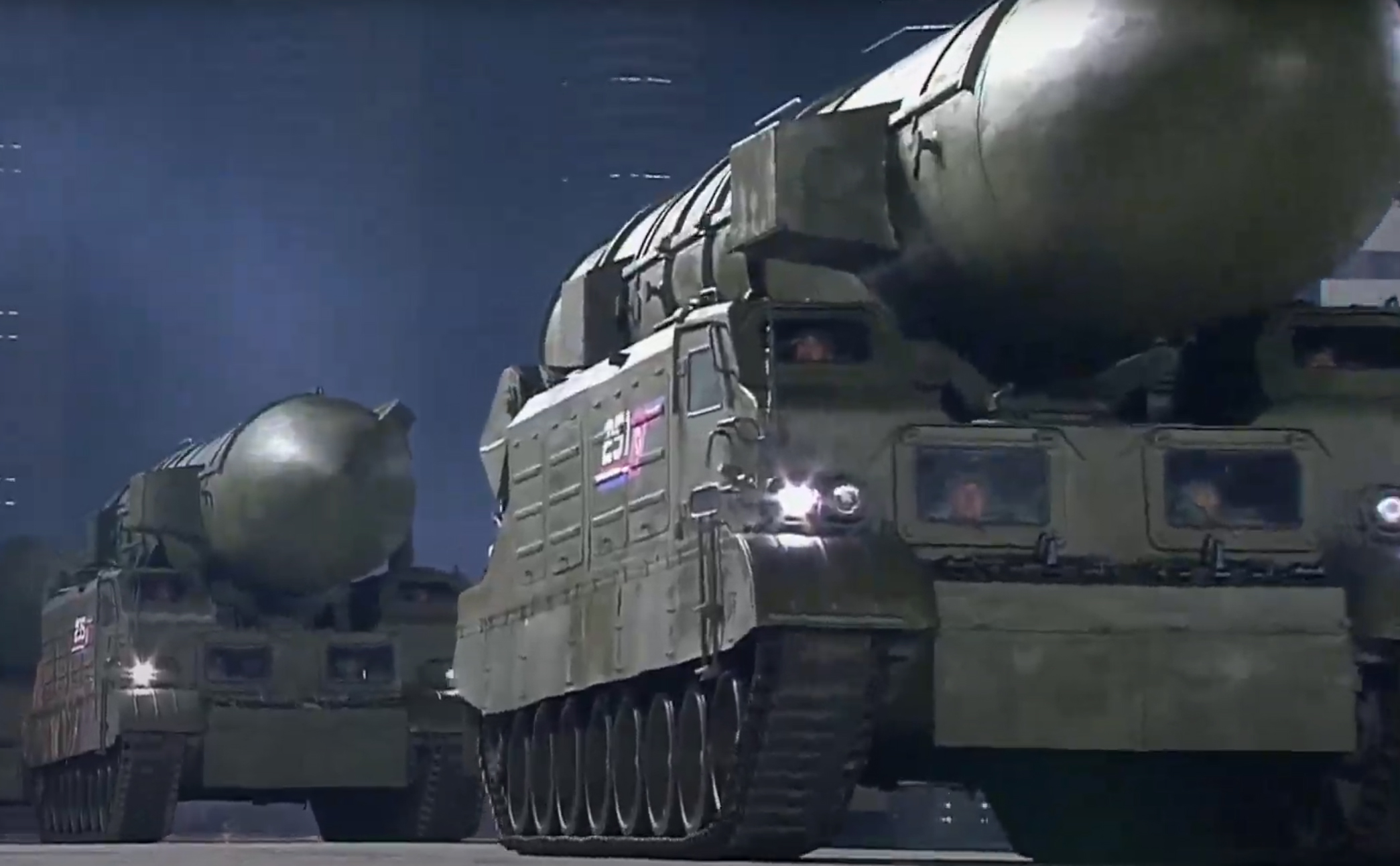
Developments on the tactical side of North Korea’s missile equation are just as stunning. North Korea paraded a host of its new generation of very large rocket artillery systems. These border on the tactical ballistic missile definition, to some degree, and are meant to rain warheads down deep inside South Korean territory during the opening stages of a conflict. North Korea’s rapid development and fielding of these jumbo rocket artillery systems have changed the risk equation for South Korea. Whereas areas not too far from the DMZ, including part of Seoul, were at risk of artillery bombardment in the past, that zone now pushes far deeper to the south as a result of these systems, all of which are new or developed relatively recently. These systems are also less costly and challenging for North Korea to build compared to their strategic counterparts, so serial production can be realized on a far greater scale.
While capabilities range in relation to size, up to a supersized ATCMs-like a quasi-ballistic missile, to 600mm guided rockets, to smaller diameter, long-range artillery rockets, the message is clear: the game has changed when it comes to the threat posed by North Korean artillery.
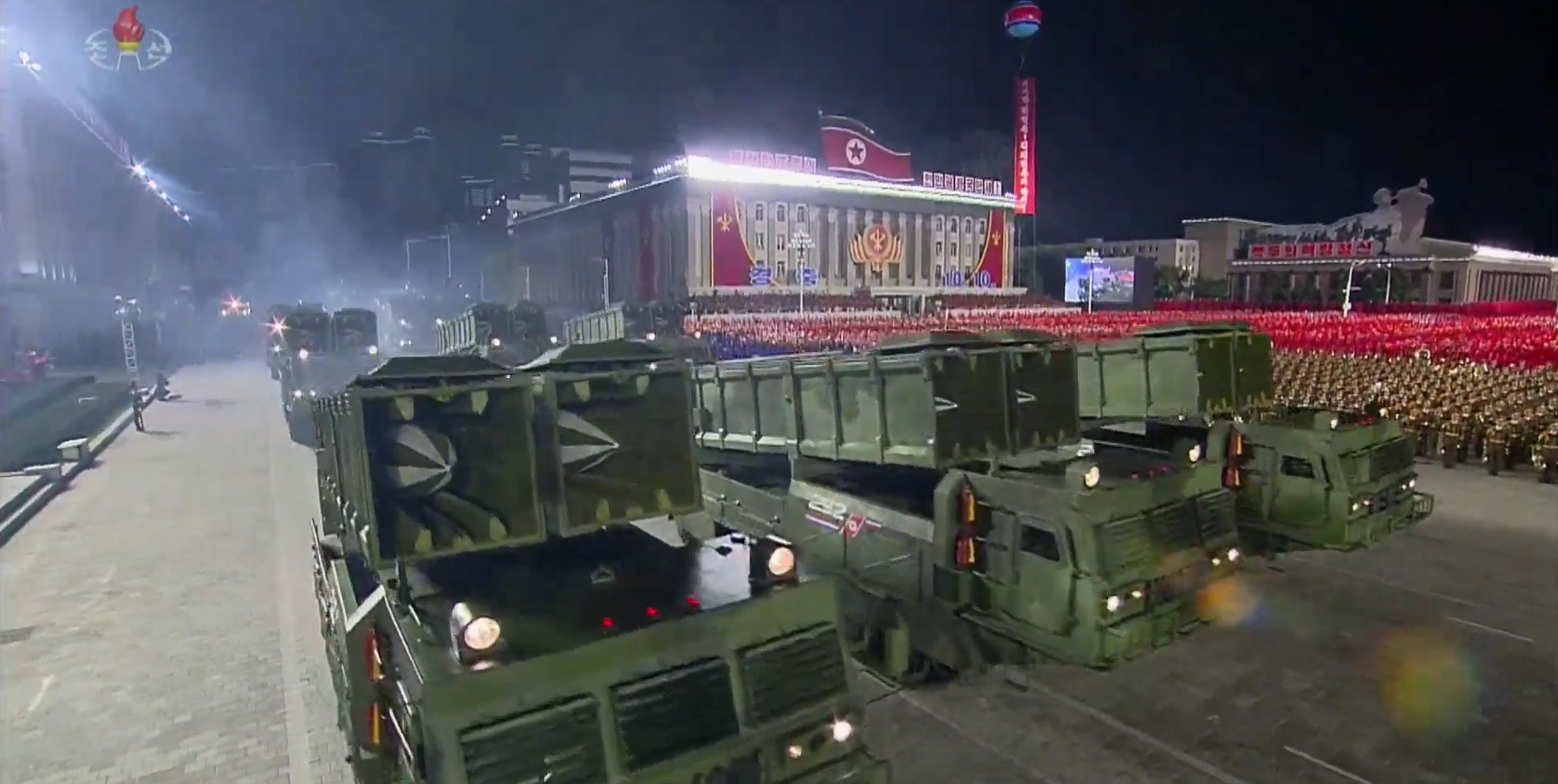
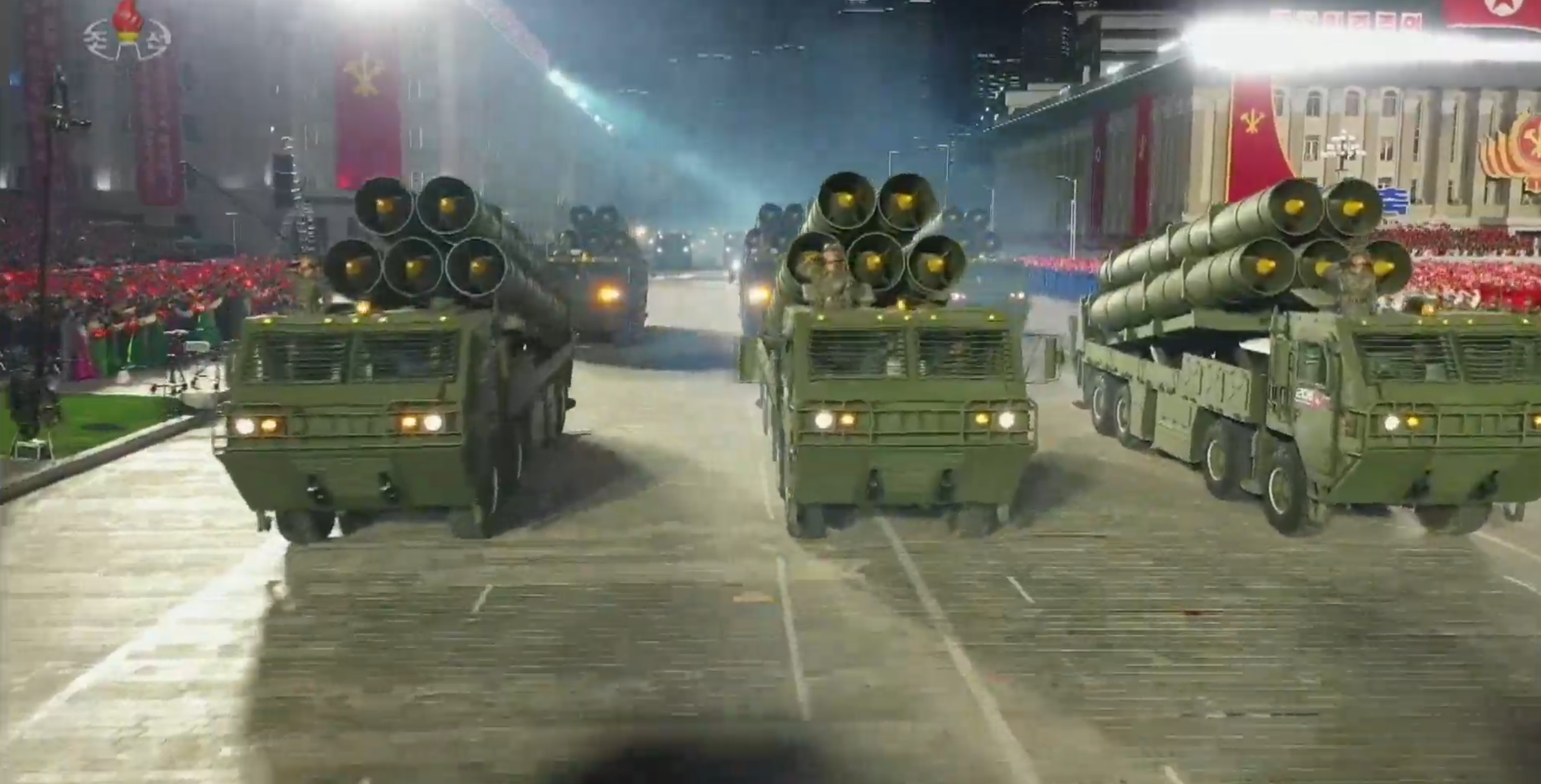

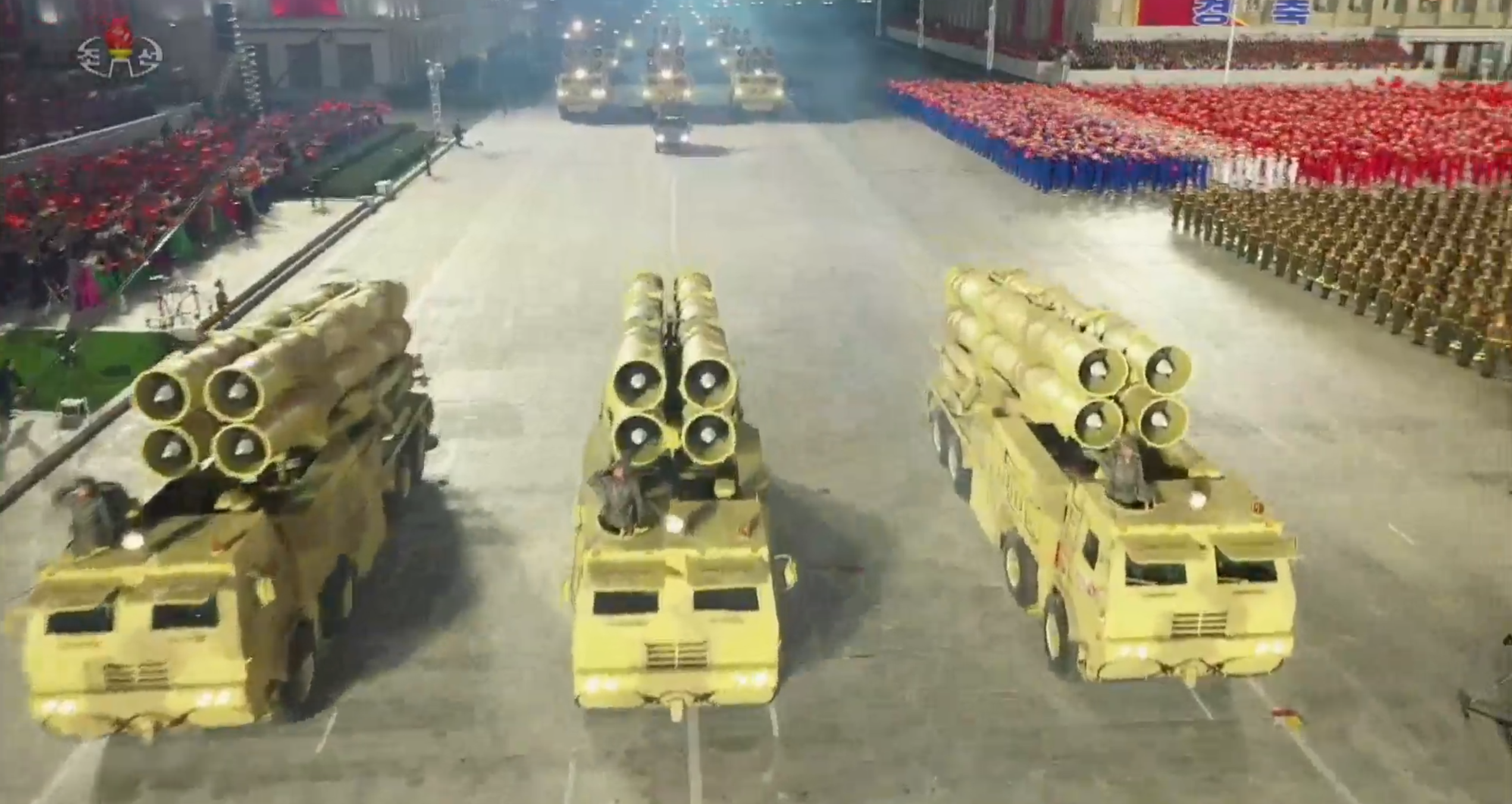
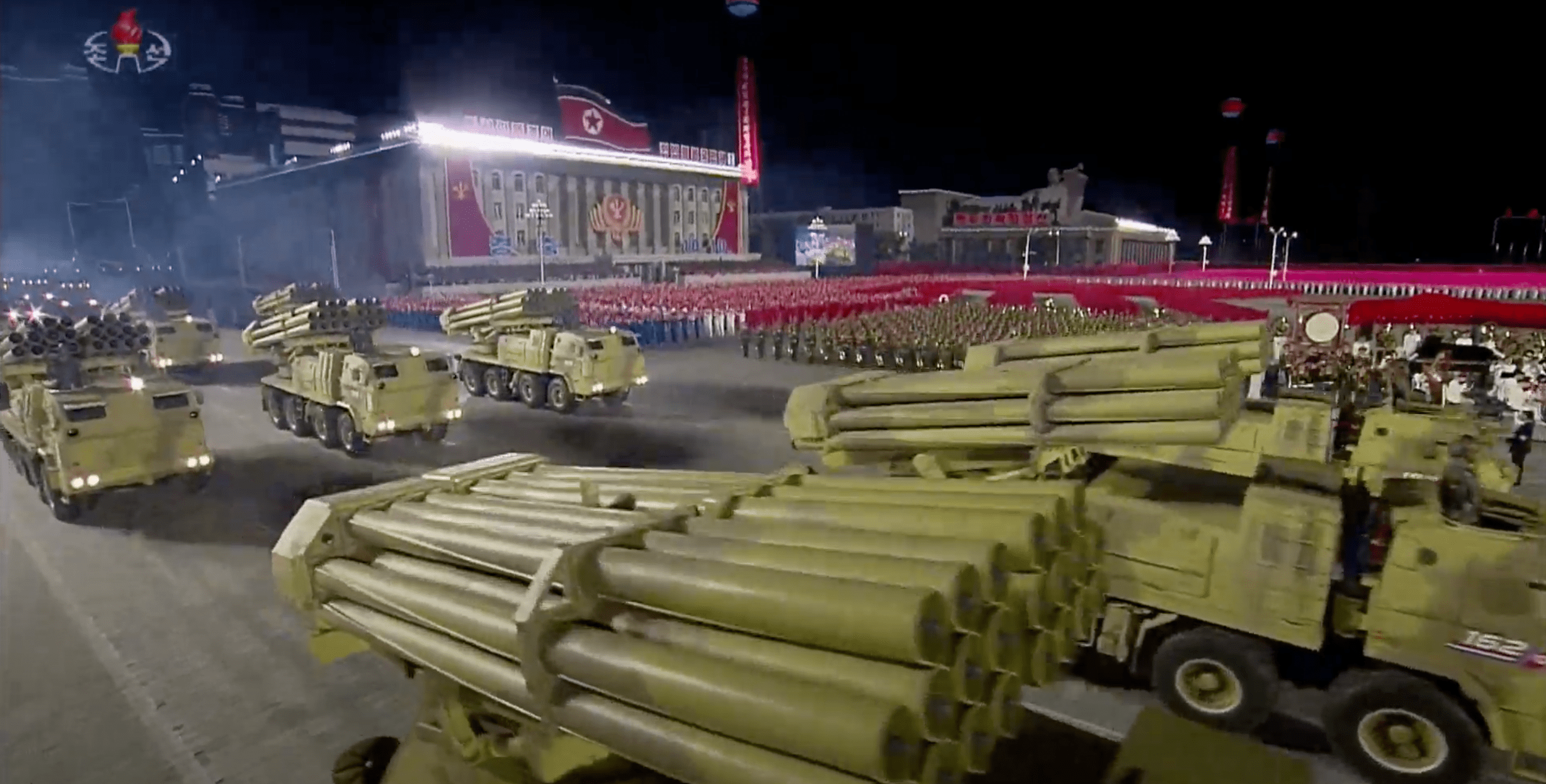
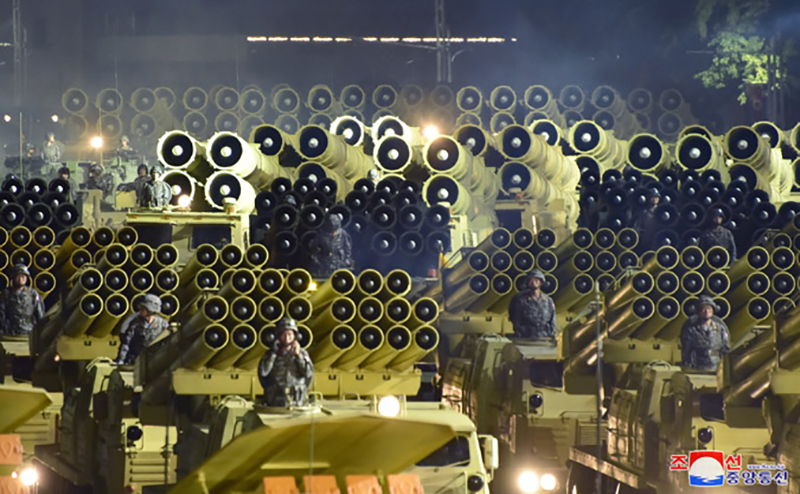
As with the TEL for the new ICBM, it’s also interesting to note how many different tracked and wheeled chassis North Korea is using for these rocket artillery systems and tactical ballistic missiles. If these are domestically-produced designs, it could further speak to a significant of the country’s automotive and heavy machinery industries.
North Korea also showed off some new air defense systems, including one that appears to be built for point defense and similar to the Russian Tor system. Larger S-300-like missile TELs were also present, likely related to the KN-06 family of SAMs. Modernization of North Korea’s air defense systems has been elevated in recent years at it remains one of the country’s weakest military capability sets. As it sits now, North Korea is highly vulnerable to enemy air operations. The U.S. and South Korea train daily on how to quickly dismantle what exists of the North Korean air defense network, but the advent of new indigenous systems complicates those war plans, at least to some degree.
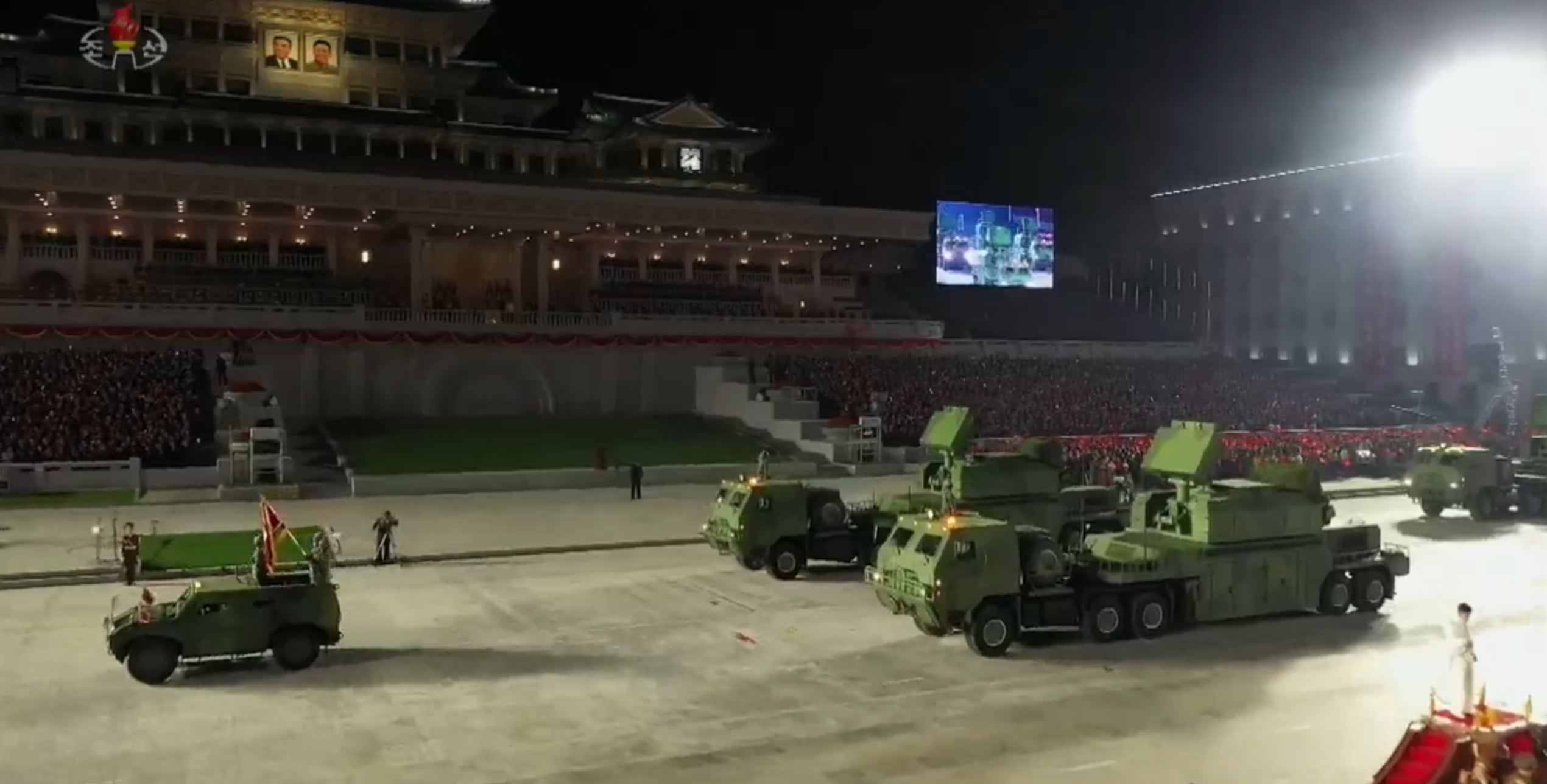
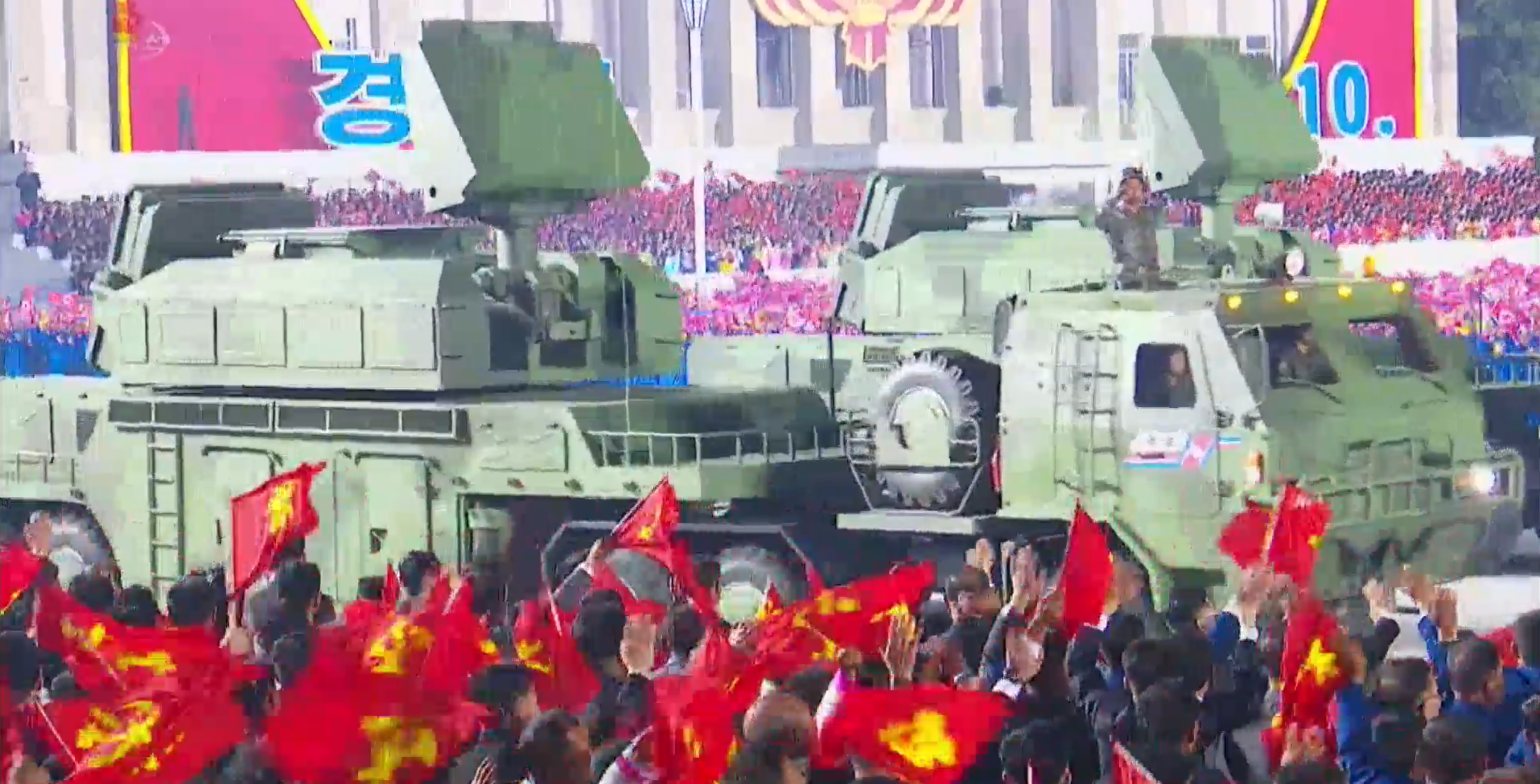
Now to armor. North Korea really stunned in this regard, unveiling a number of new armored vehicles, the most impressive of which is a brand new main battle tank. As you can see, the design is quite modern in outward appearance, with integrated systems embedded into its design, not just tacked on after the fact. These including anti-tank missile launchers mounted on the sides of the turret. The tank alone is worth its own analysis piece. It is quite remarkable North Korea was able to come up with this, although what chassis and drivetrain lie beneath its skin is a big question.
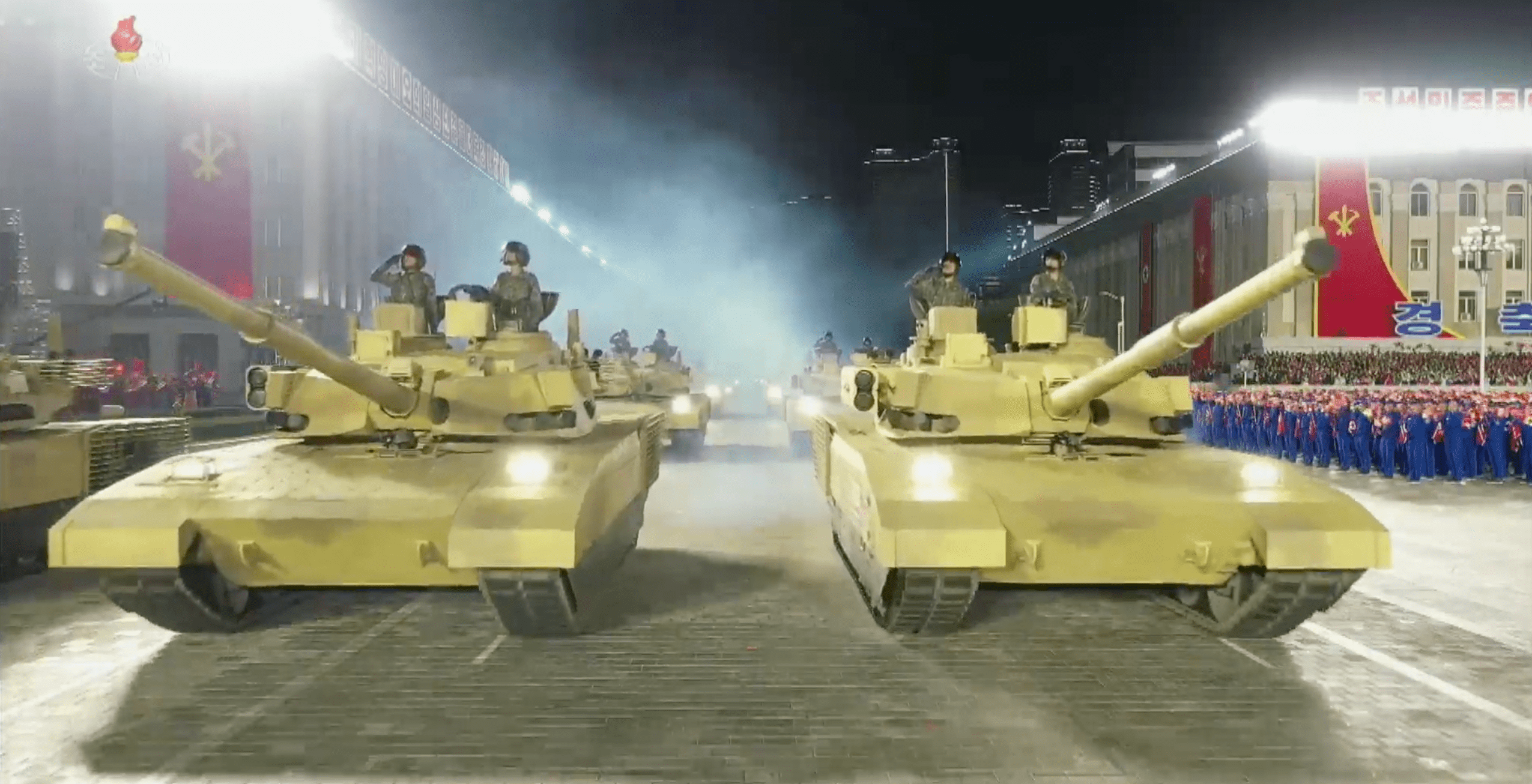
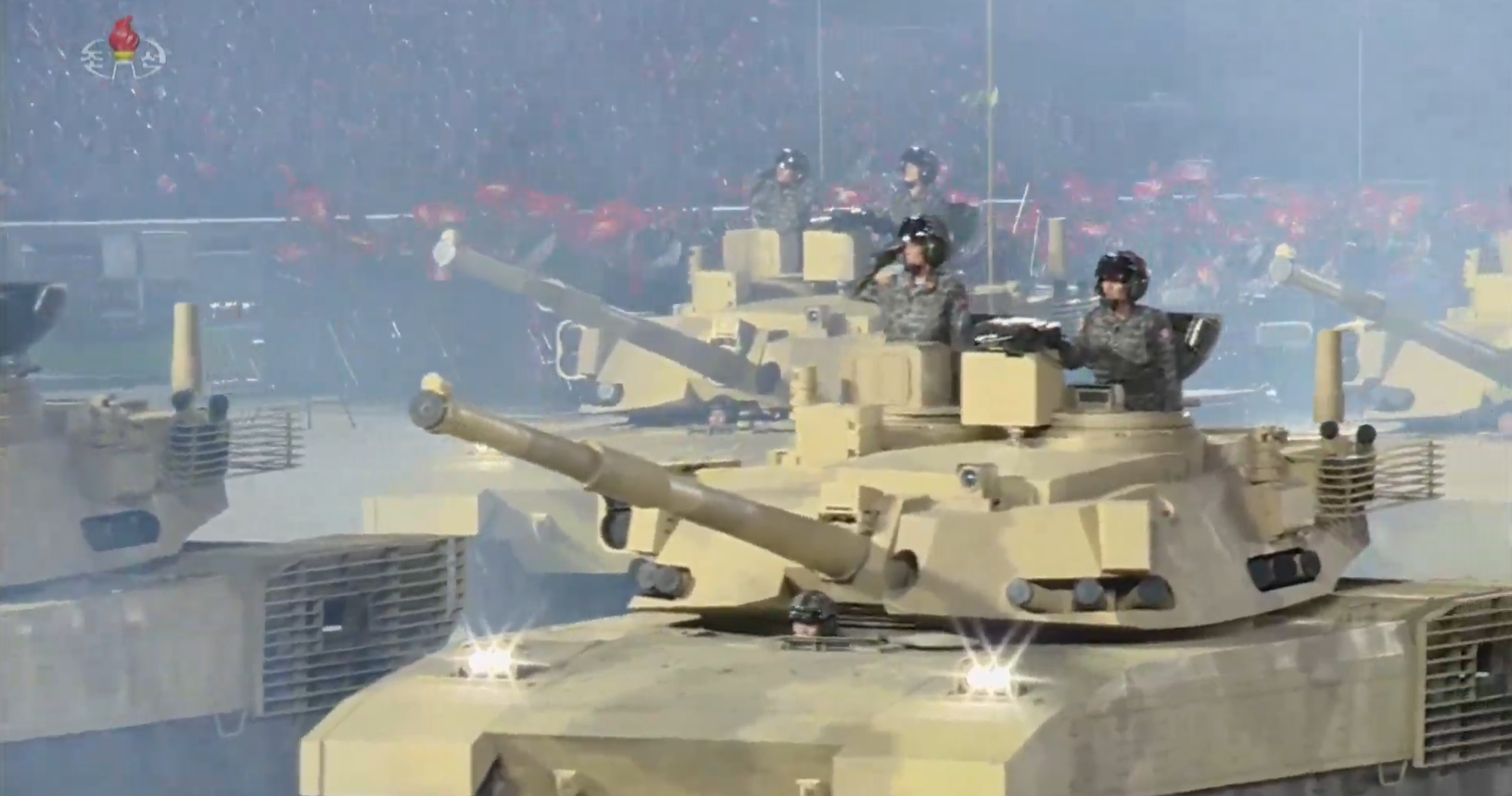
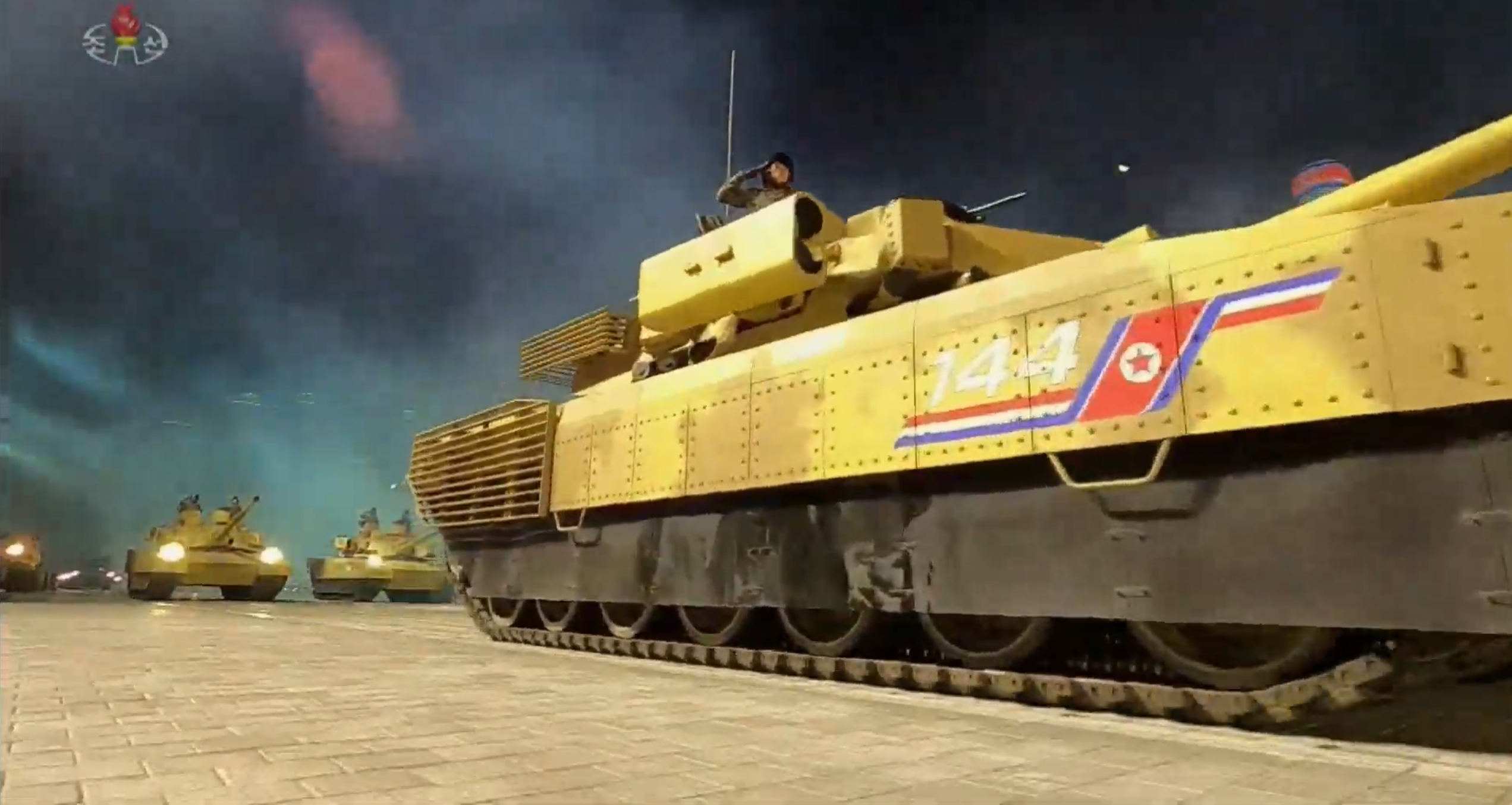
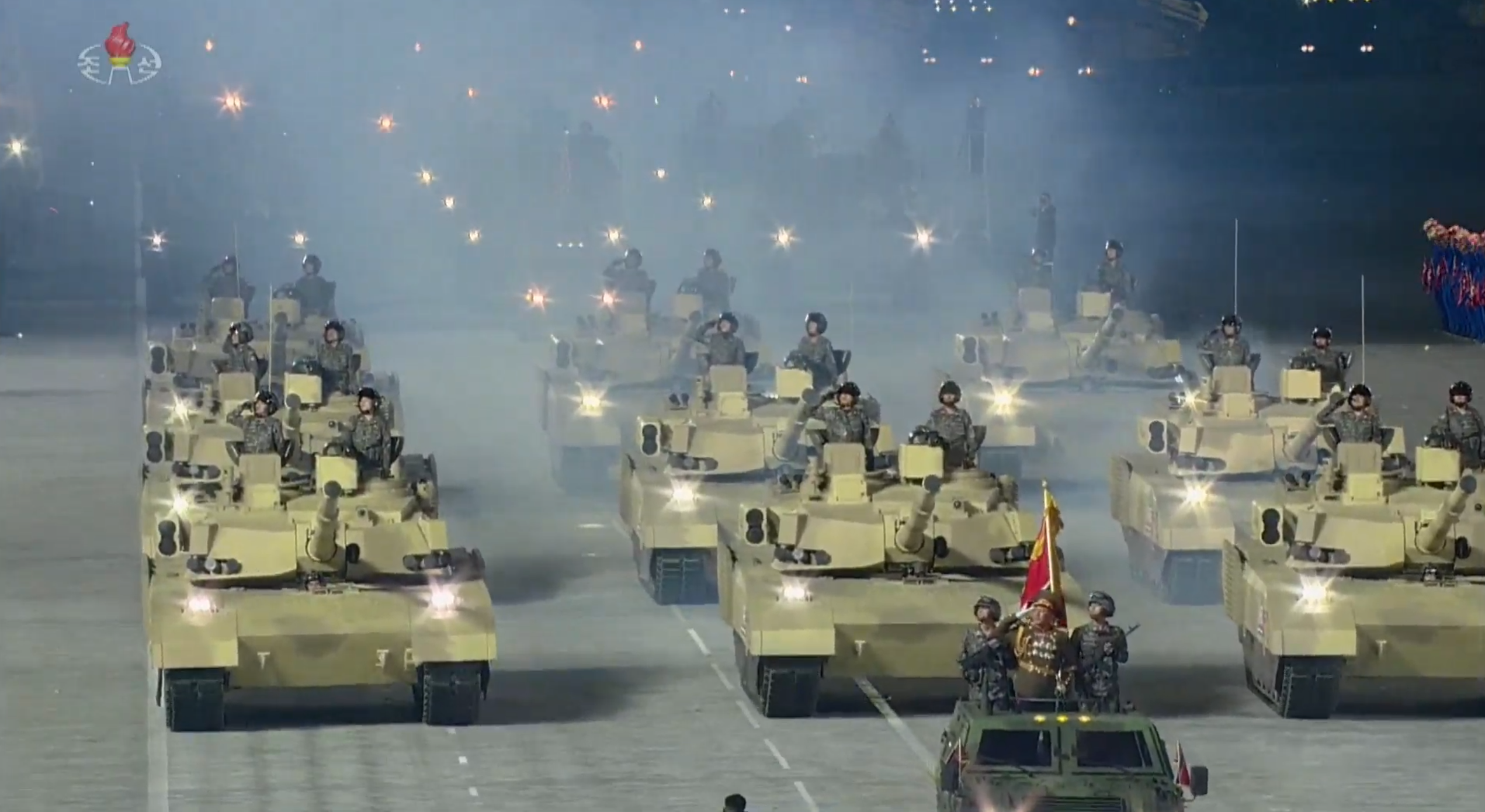
Another unveil was this wheeled armored vehicle that appears to feature an eight-round loitering munition launcher. This type of weapon is changing the battlefield as it can fly out to a target area, briefly surveil it, and then strike a target of opportunity with pinpoint precision. Israel largely pioneered this technology with their Spike NLOS series of weapons. North Korea seems to have taken note. Such a system is extremely relevant for combat operations along the DMZ.
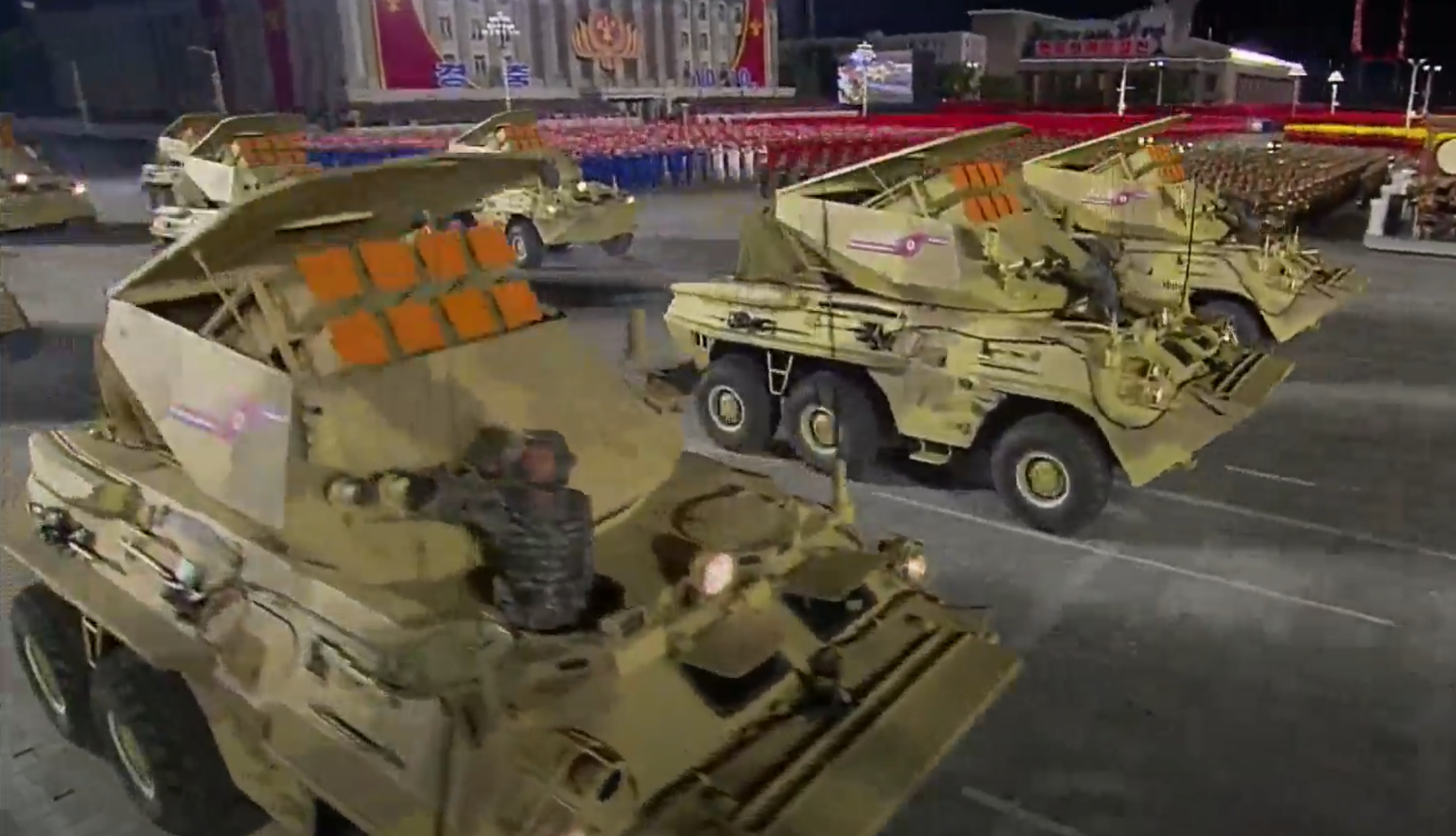
An 8×8 wheeled mobile gun system also made an appearance. This is an entirely new capability for North Korea and allows for higher-speed mobility for a large direct-fire weapon compared to its tracked counterparts. Similar arrangements have become popular around the world, including in the U.S. with the M1128 Stryker Mobile Gun System.

There is also an 8×8 armored vehicle that is designed to host anti-tank guided missiles, which is new. The two together would provide a highly agile anti-armor capability.
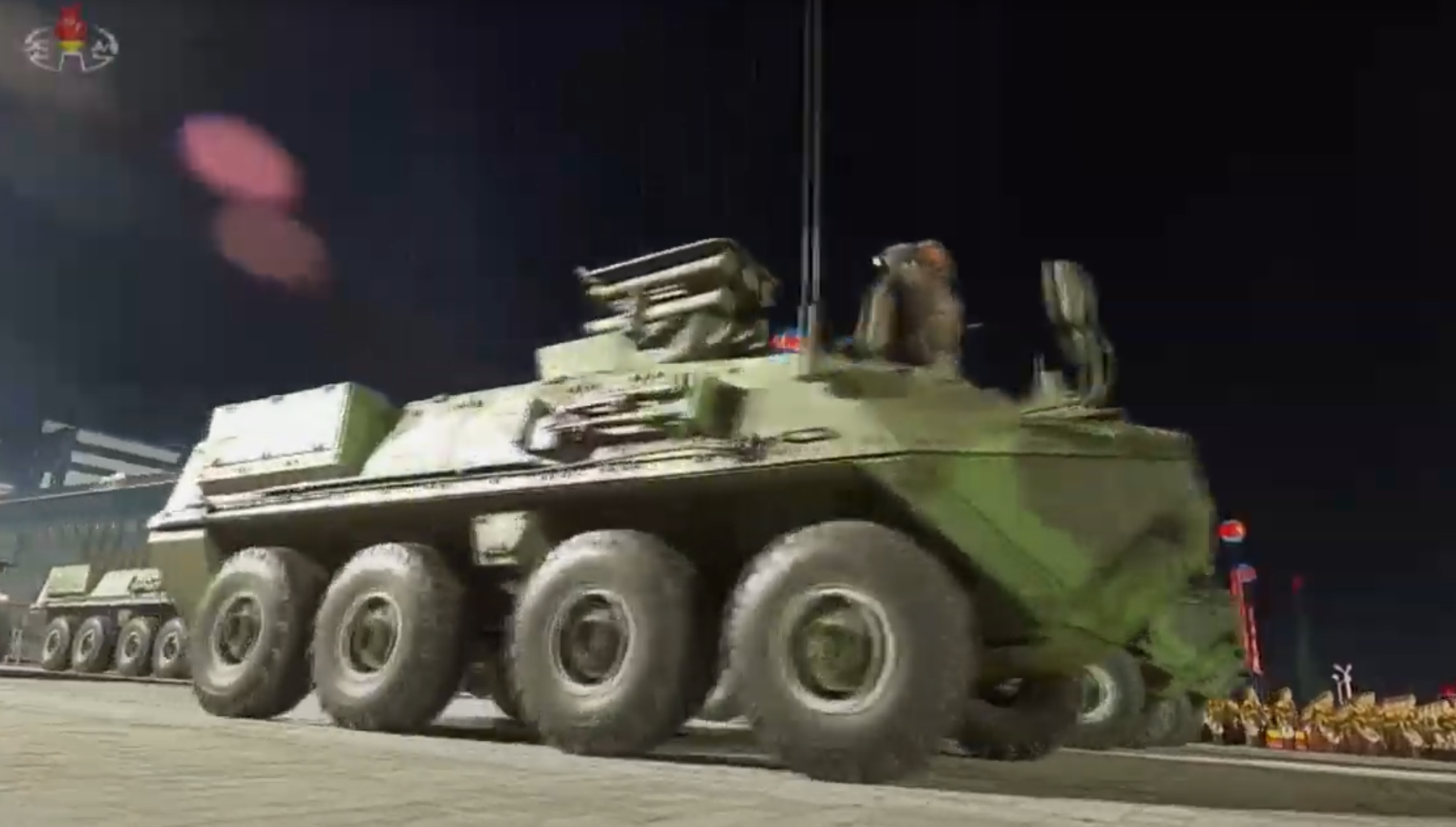
North Korean soldiers themselves have received a number of new uniforms, many of them modernized to including digital camouflage, such as this caped look:
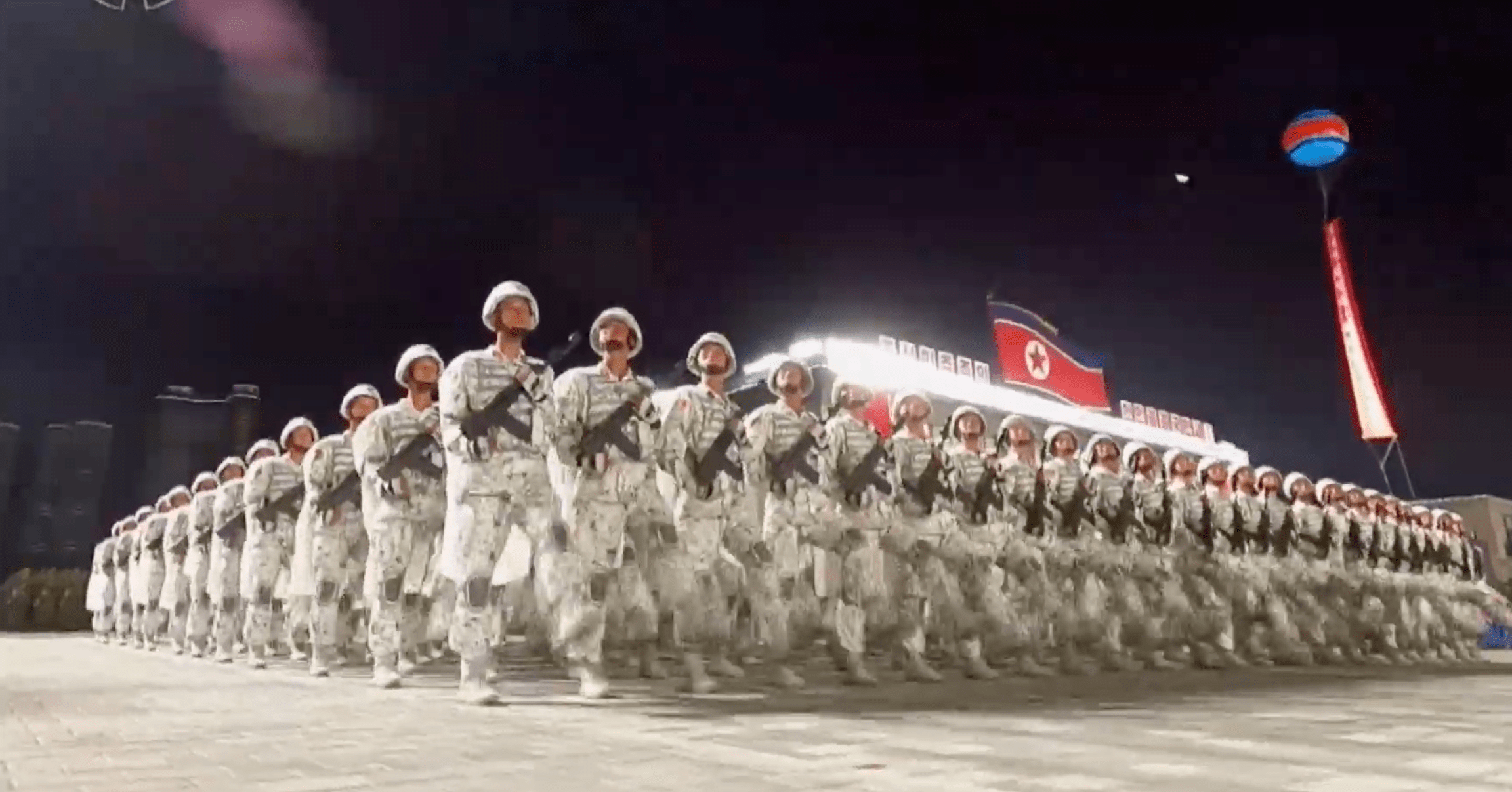
We also got to see these guys in what appear to be hybrid ghillie suits.
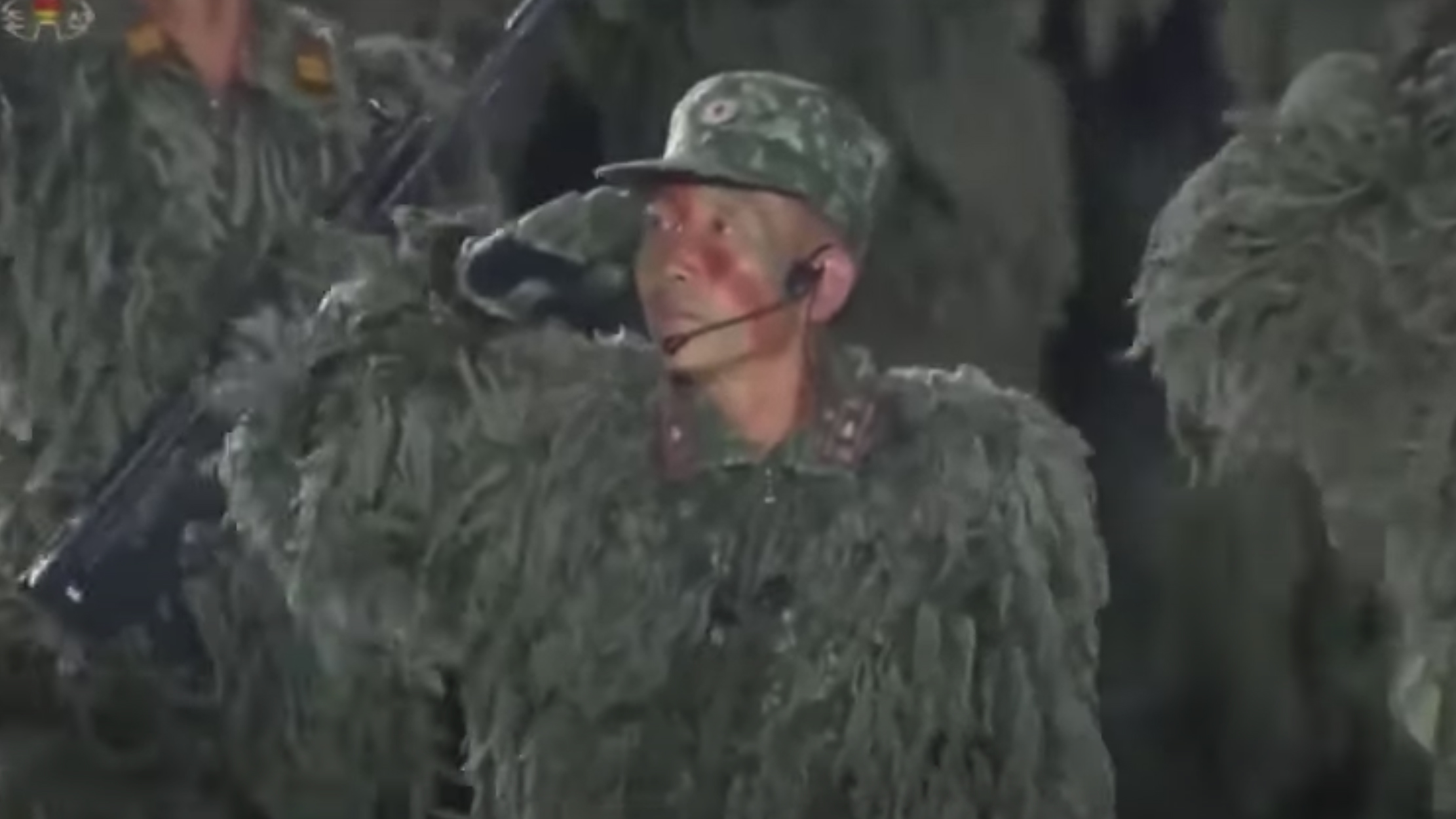
North Korean chemical weapons troops looking ripped right from a dystopian science fiction movie.
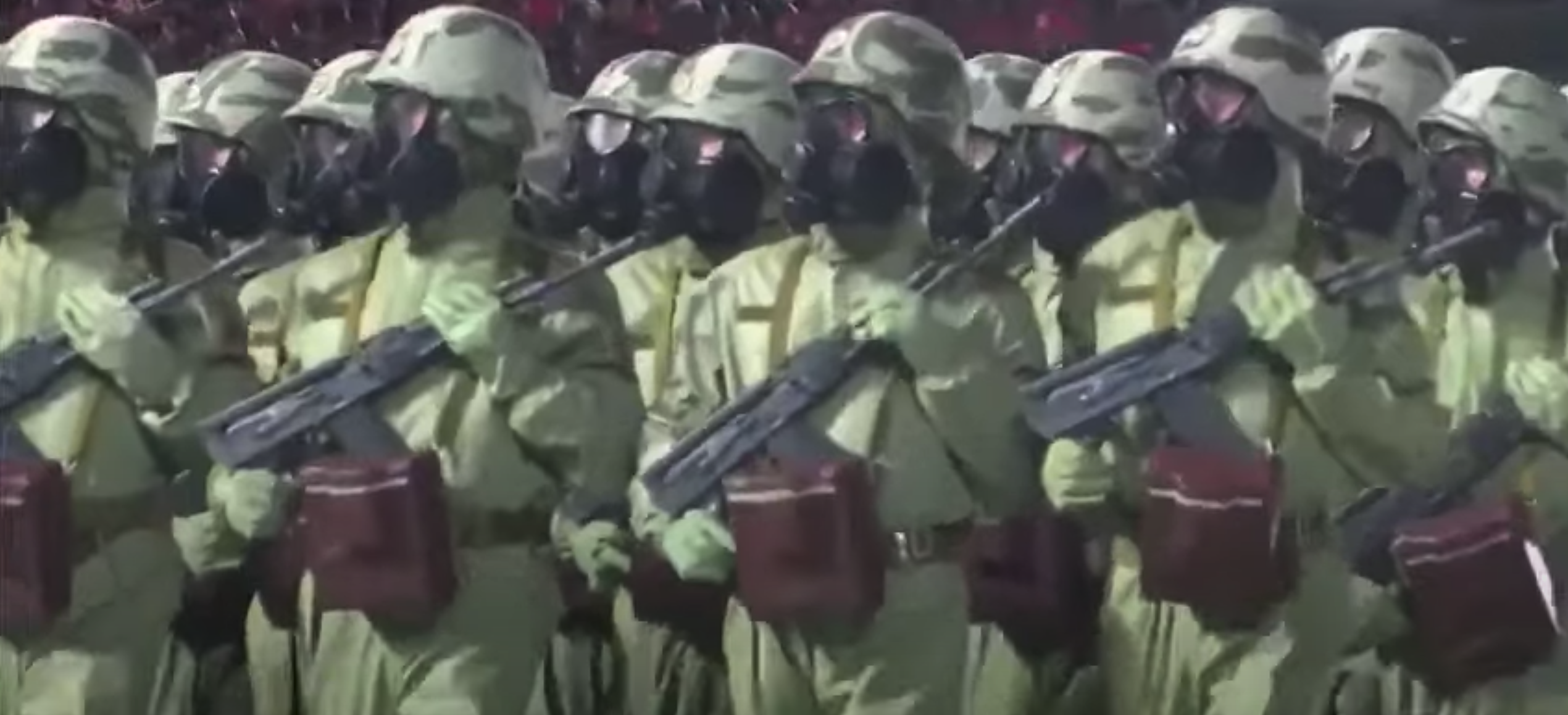
The black-clad troops appear to be some sort of federal unit.
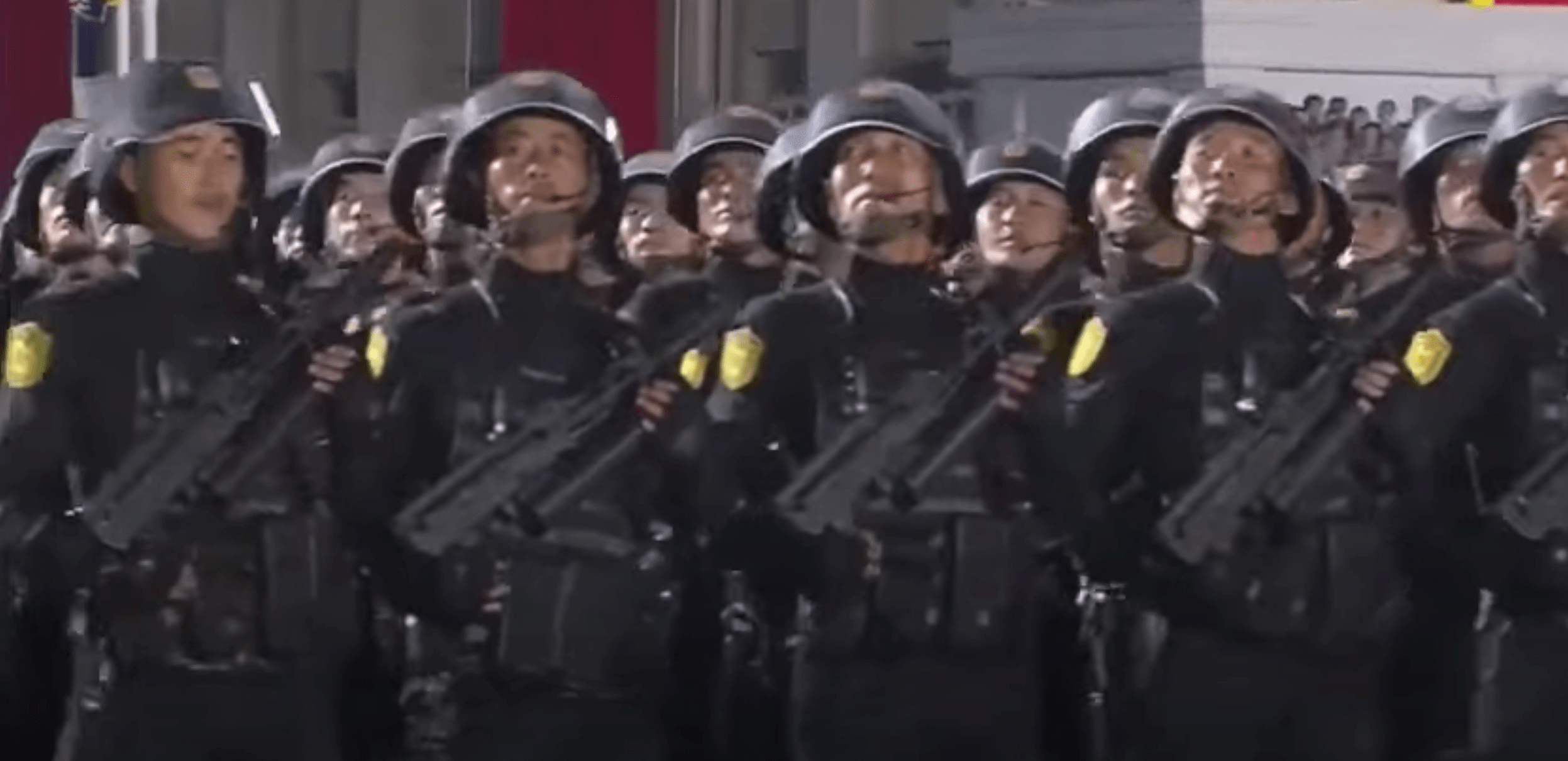
North Korean special operations forces are seen here with suppressors and more modern accouterments.
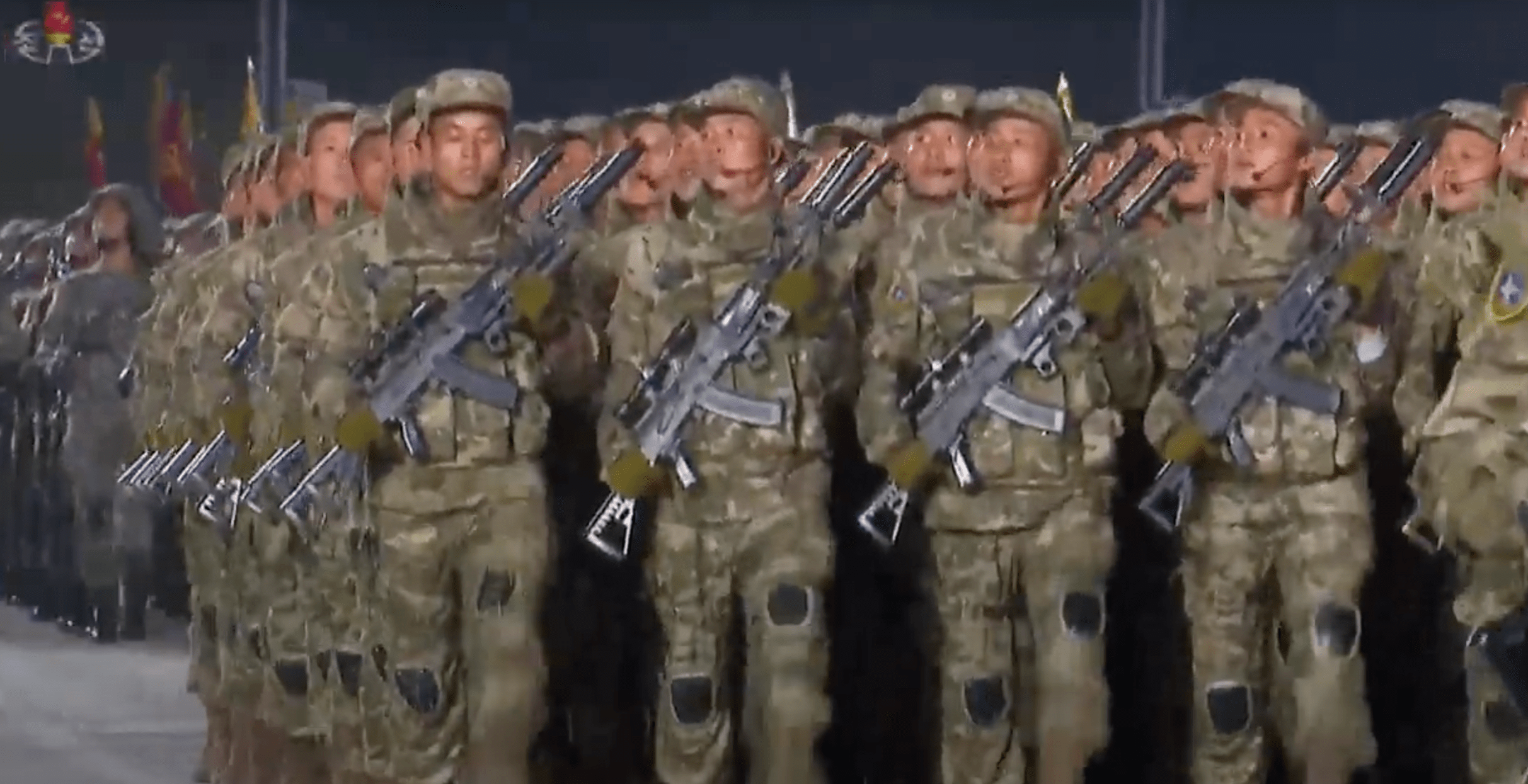
As always, North Korea’s massive helical ammunition magazines were on full display, now serving with multiple units.
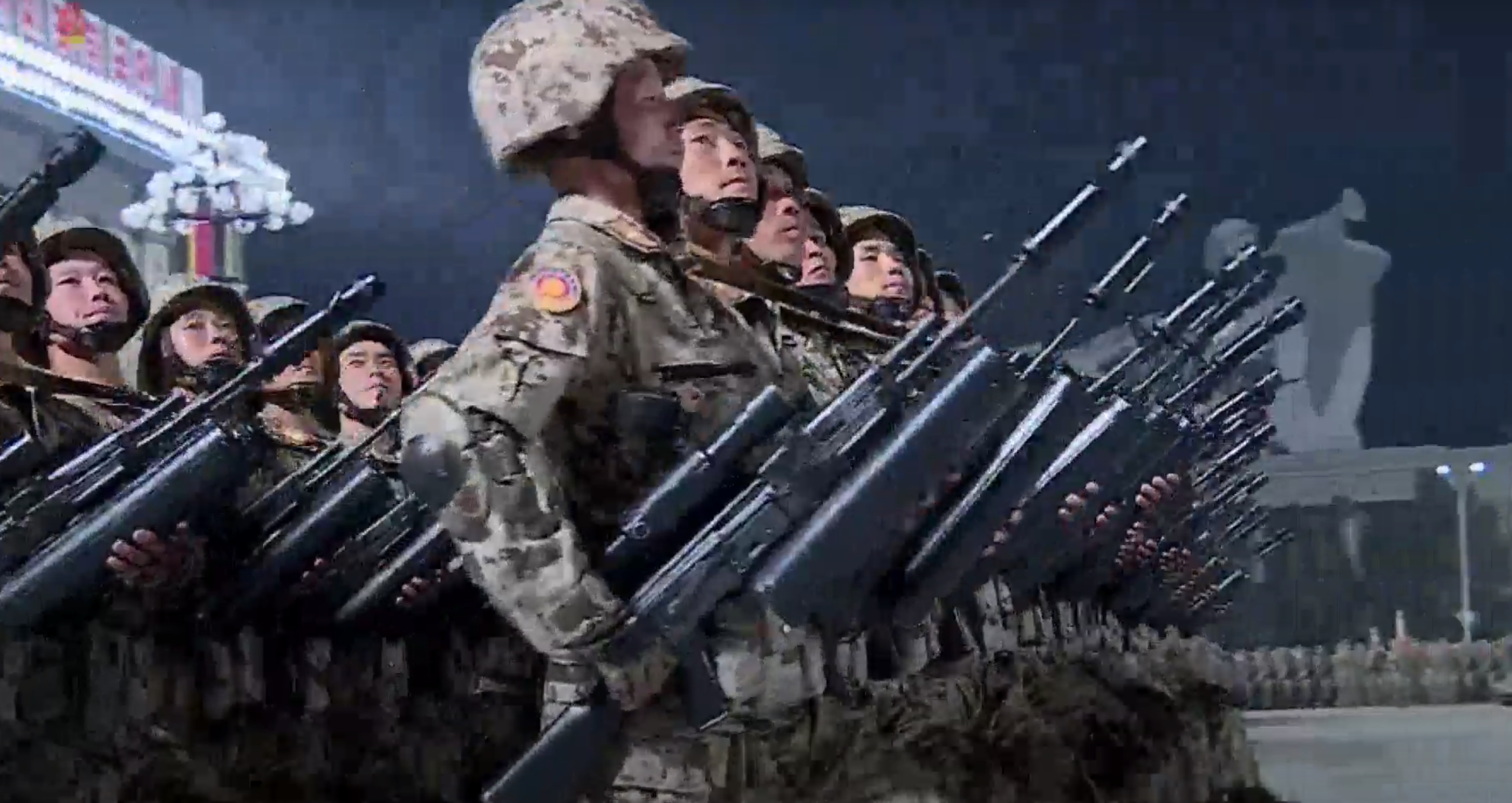
The aerial side was especially unique. Although nothing new was displayed, the North Korean Air Force equipped its most modern aircraft with LED lights to make them glow and did massive flare dumps over the square.
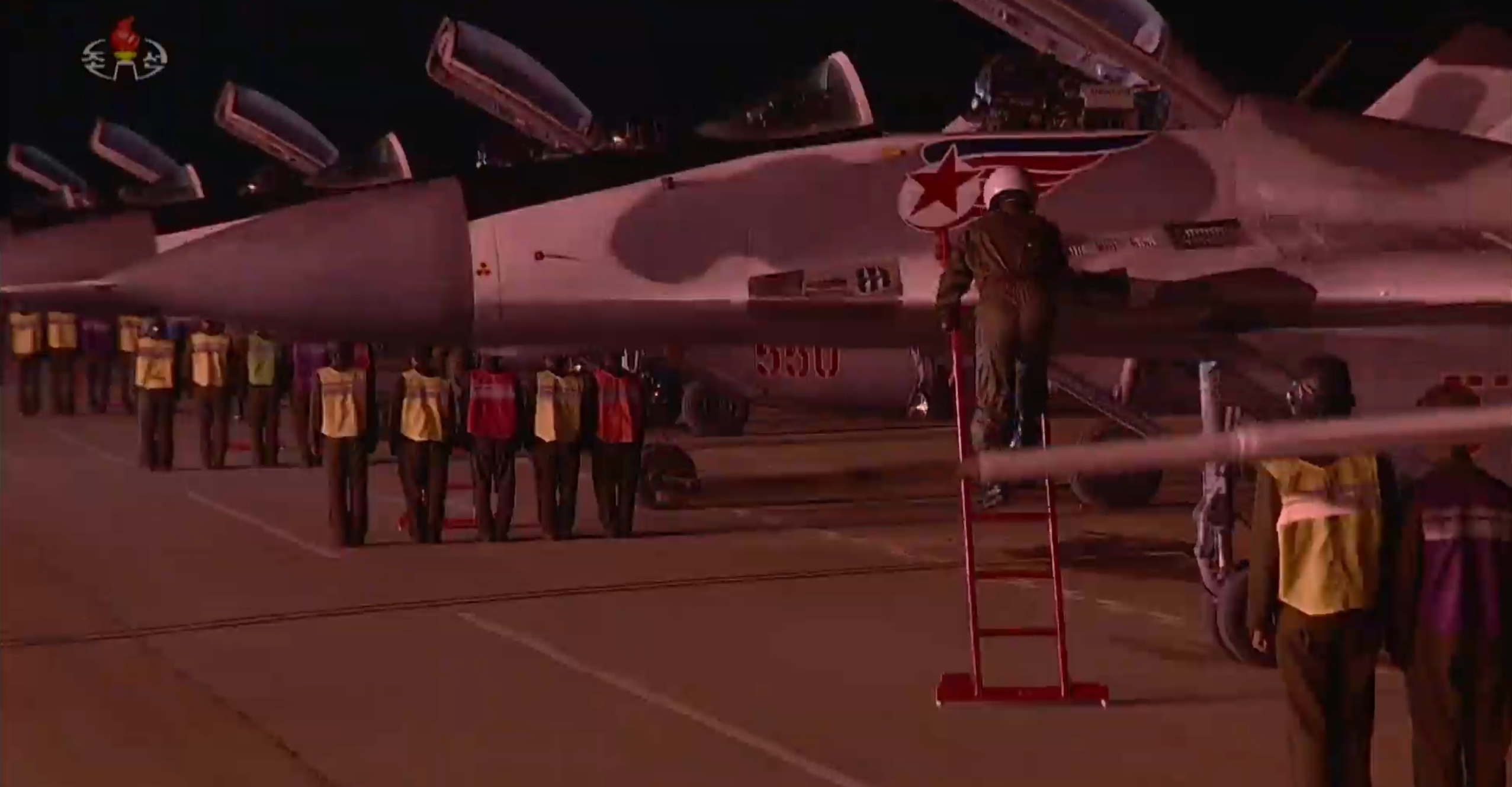
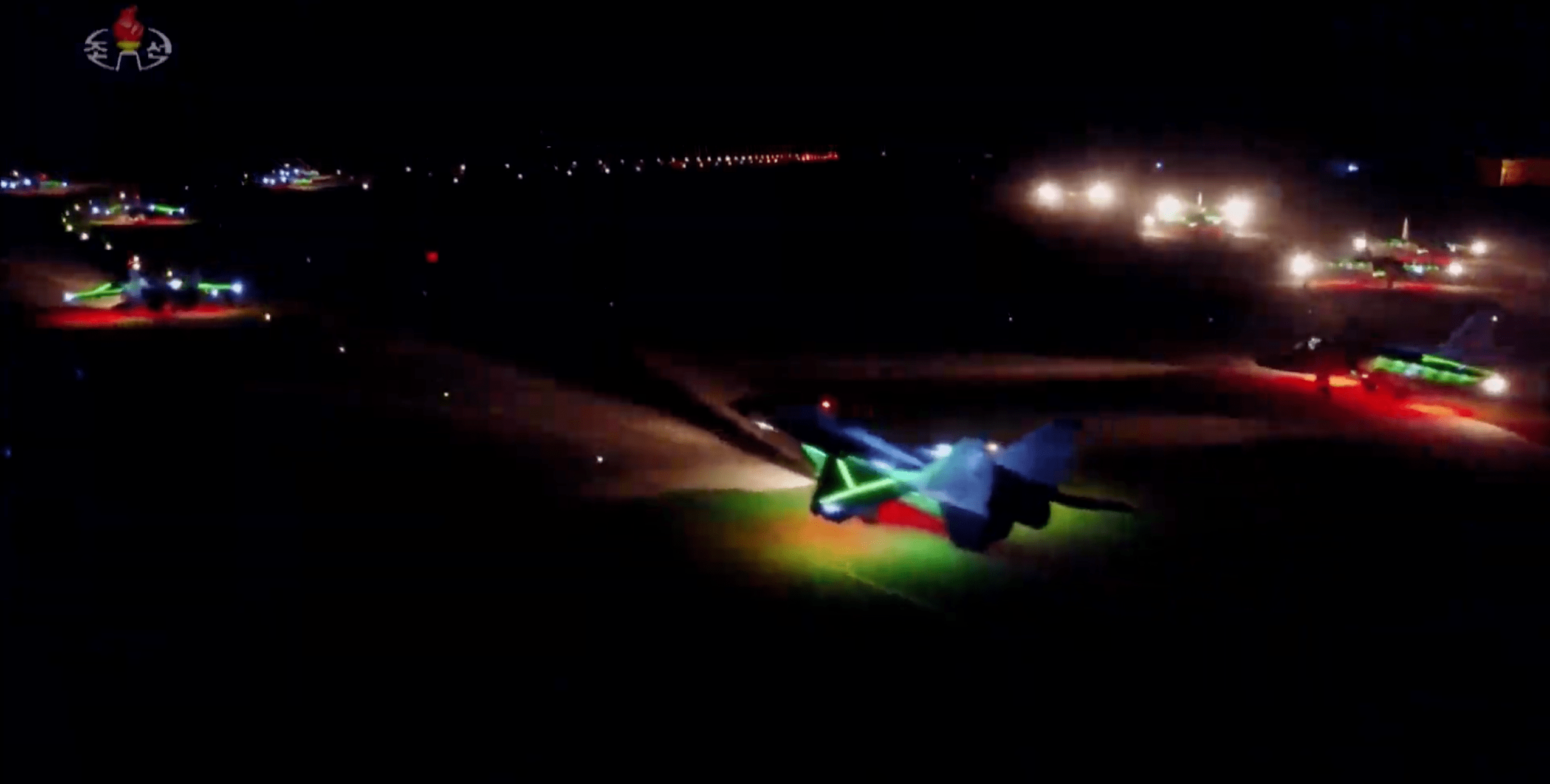
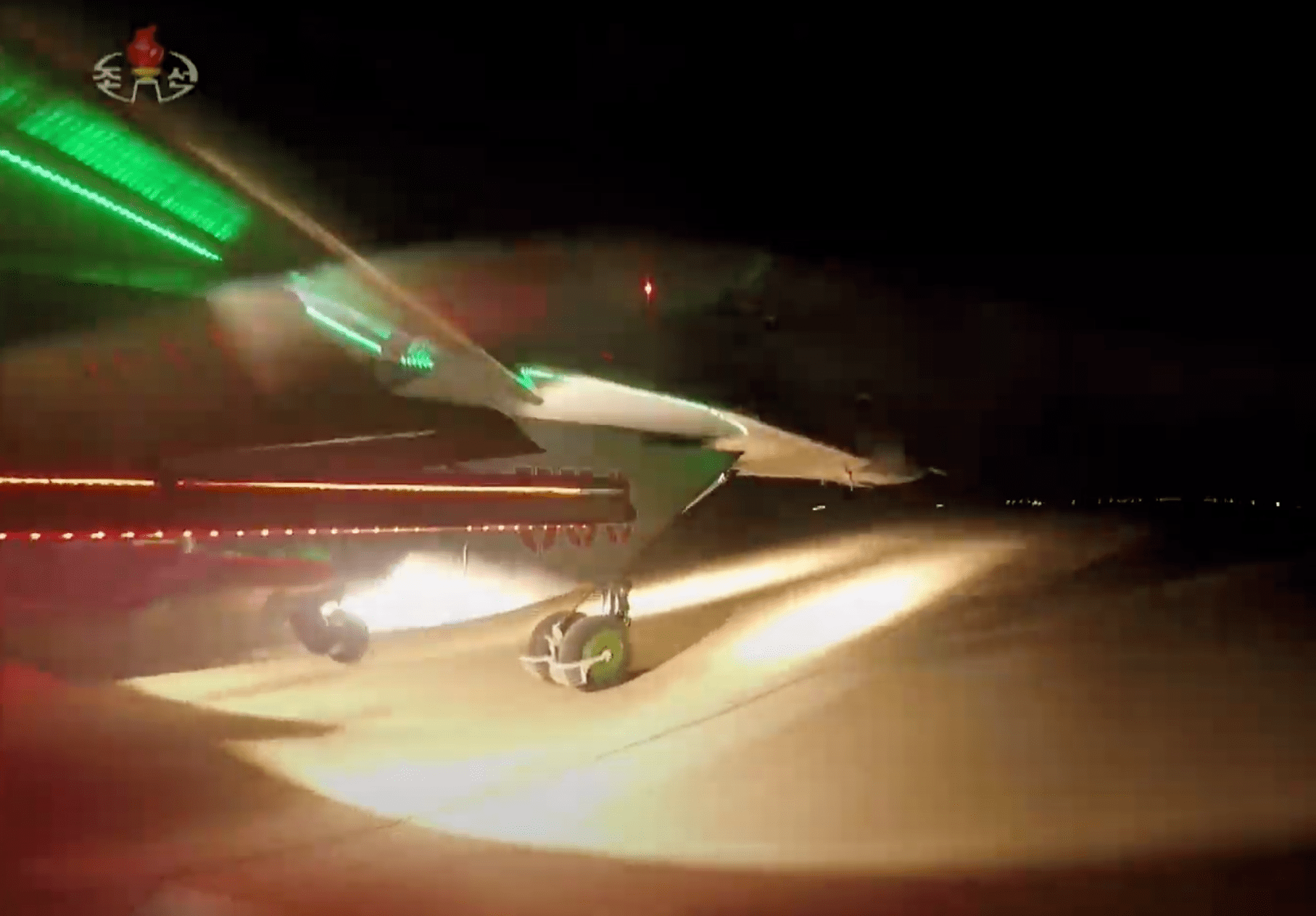
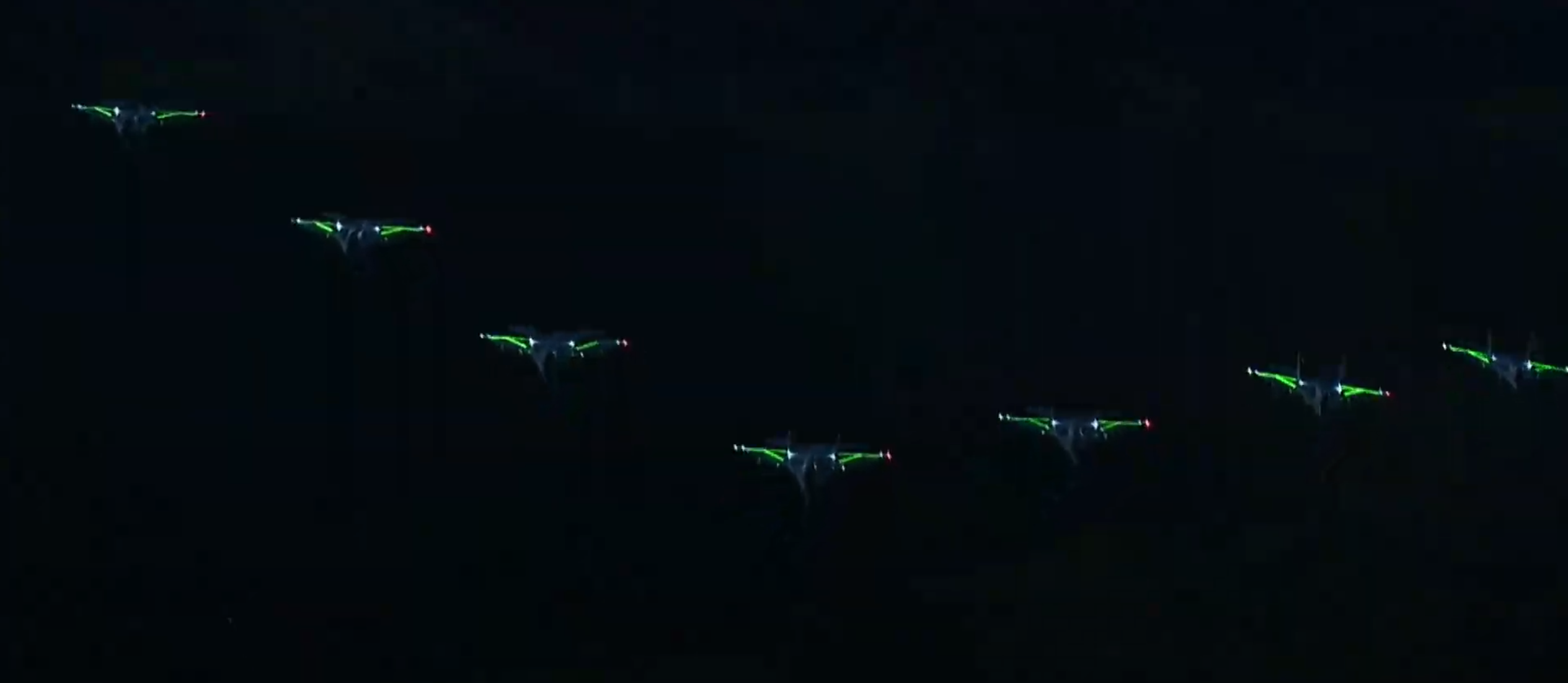
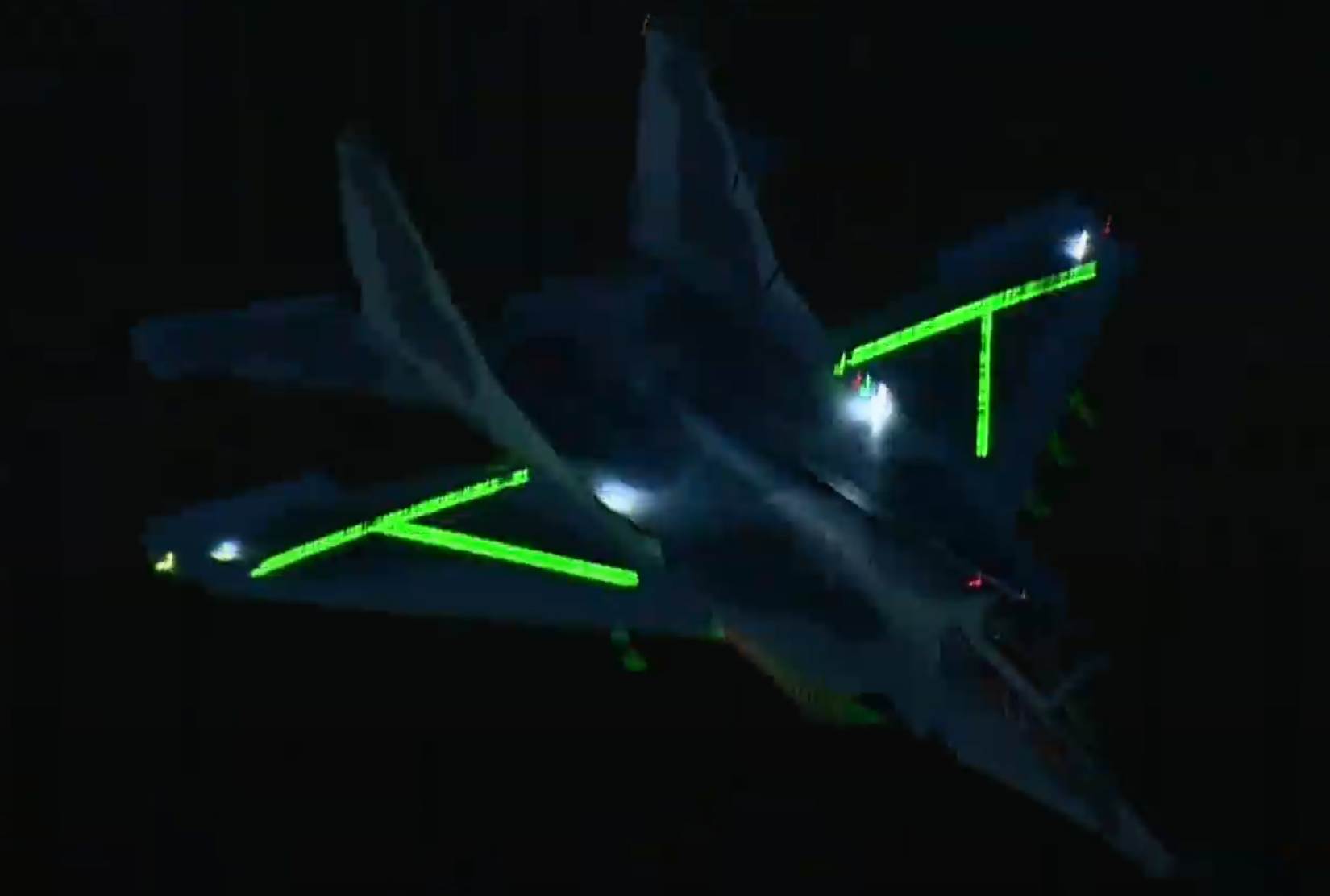
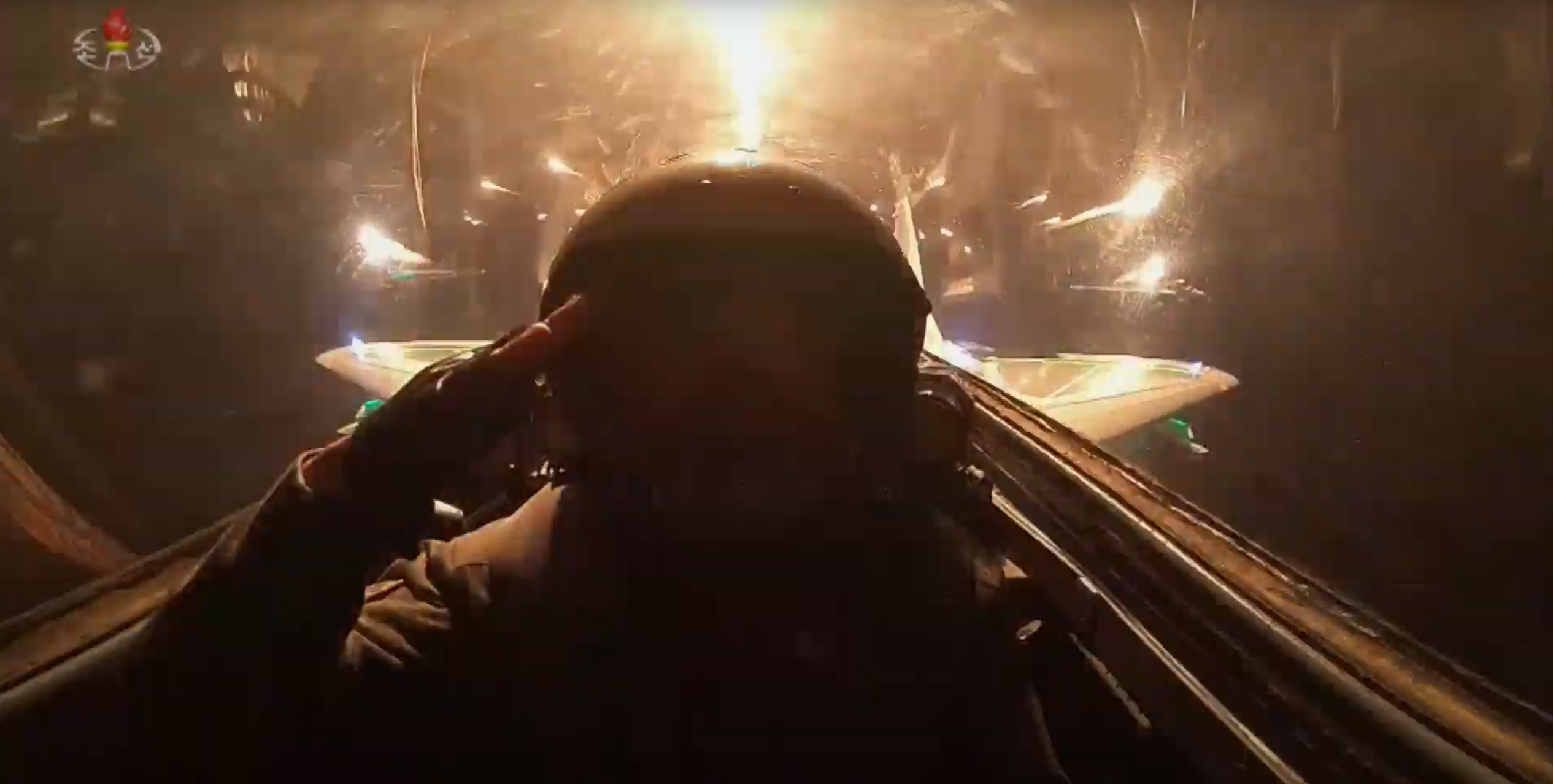
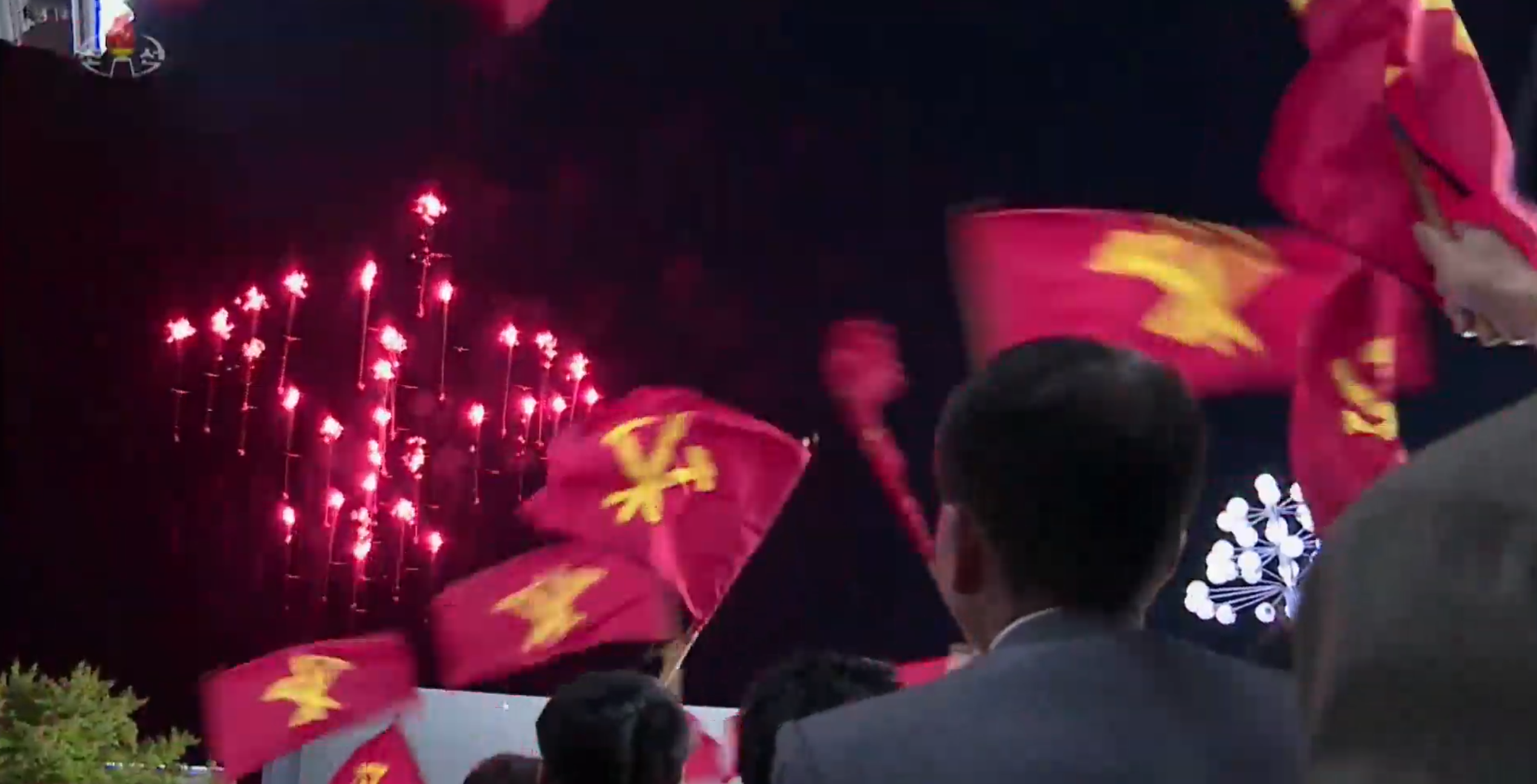
The two main tactical types that took part in the display were the MiG-29 and Su-25, but what has to be underlined here is that we saw seven MiG-29s flying at one time. That may sound comical, but the reality is that North Korea’s MiG-29s, which are decades old as it is, are a highly limited resource for the North Korean Air Force. They are primarily tasked with protecting Pyongyang and depending on the source, anywhere from a dozen to two dozen are still anywhere near to flying form, with only a fraction of those being actually mission capable at any given time. The most we have ever seen in the air at one time was six, so even the addition of one airframe is worth noting.
The aerial display itself was quite remarkable. Incorporating LED light strips on combat aircraft is not an established practice. It may seem easy, but it really isn’t. Securing them in such a way that they won’t damage the aircraft if they come loose, especially considering how few of these planes North Korea has, would have been a critical task. The production of the flying segment, with the video leading up to it and in the air, likely filmed during previous practice flights and then cut into the performance, was remarkably high-grade.
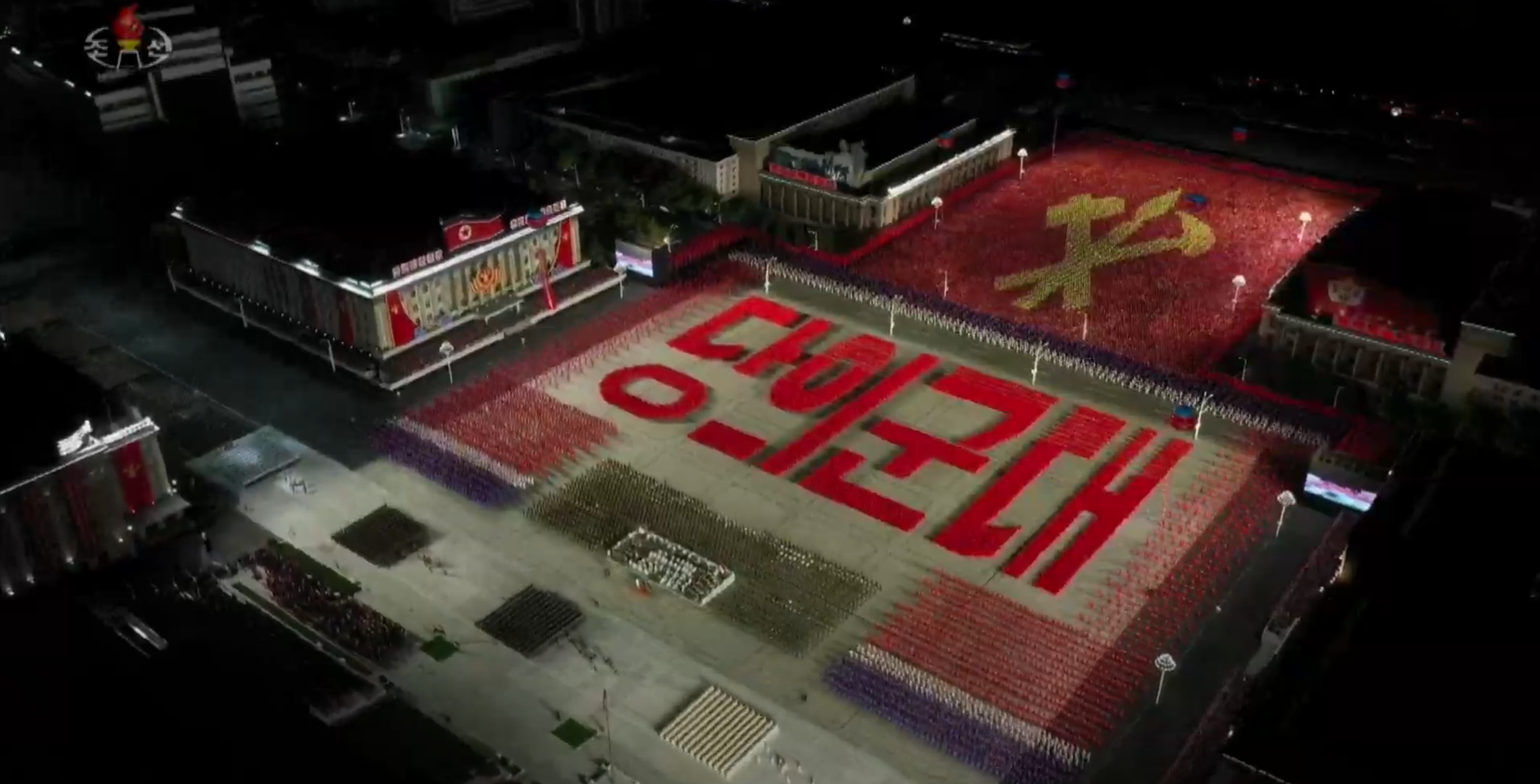
There was much more to see, including many tears and longing looks of admiration from the troops, attending officials, and the crow towards Kim Jong Un. Many existing systems also made an appearance, BM-25 Musudan ballistic missiles, anti-ship coastal defense systems, and others. One that puzzled us was this TEL with elongated tubes. Is this a new long-range anti-ship or land-attack cruise missile system, some type of long-range SAM? We don’t know at this time.
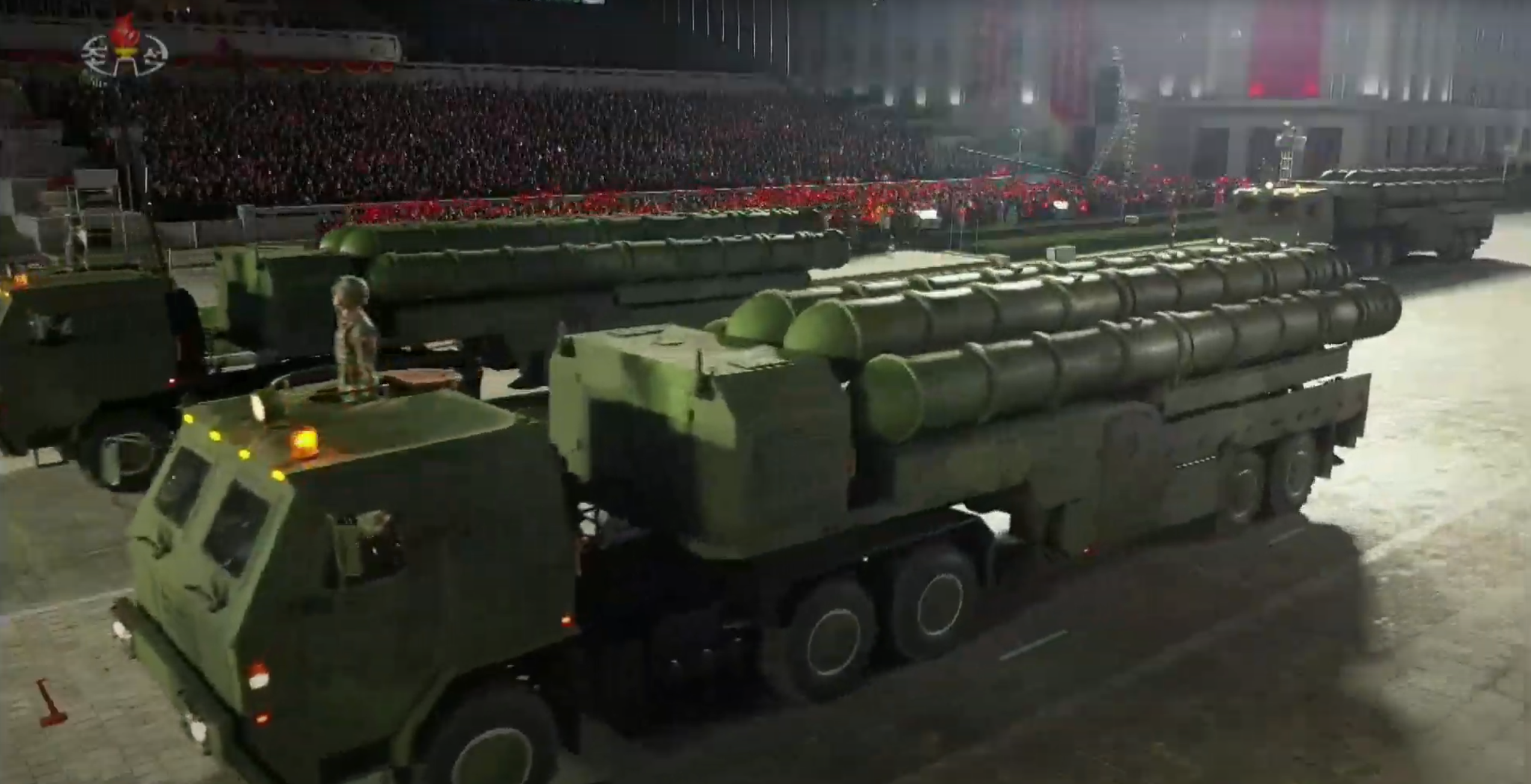
While some will argue that we don’t know how many of these systems North Korea actually has, that really isn’t the point. They have developed these new capabilities at considerable cost. There is little reason to do that beyond some abstract propaganda value, without having at least some intention into putting it into larger production to some degree, or at least learning from its development and testing. The truth is this kind of debate is antiquated. As we mentioned earlier, North Korea under Kim Jong Un has been far more straight forward with its military technology ambitions than in the past. The ballistic missiles displayed in recent years have proven to be real. By and large, the ground vehicles have, as well. With this in mind, it is somewhat astonishing to see just how far the country has gotten when it comes to conventional modernization and new strategic capabilities under such extreme circumstances.

Even putting on this scale of display alone, a remarkable investment in resources during especially challenging economic times, says a lot. While the citizens of North Korea are suffering, Kim’s military apparatus appears to be thriving. And even though the testing of long-range ballistic missiles may have subsided during this hollow excursion into detente between North Korea, the United States, and South Korea, the regime has only accelerated further development of its strategic systems and refined its ability to manufacture them in a serial nature.
These kinds of displays of military might are often a vision of where North Korea wants to be in the near term. Kim knows full well that the second the U.S. comes to its senses, either by a change in Presidents through the election or if Trump finally sours to Kim’s ridiculous platitudes, his country will have a far more mature strategic arsenal to deploy and test, as well as an updated conventional one.
Unsurprisingly, it looks more and more like this was the plan all along.
Contact the author: Tyler@thedrive.com
